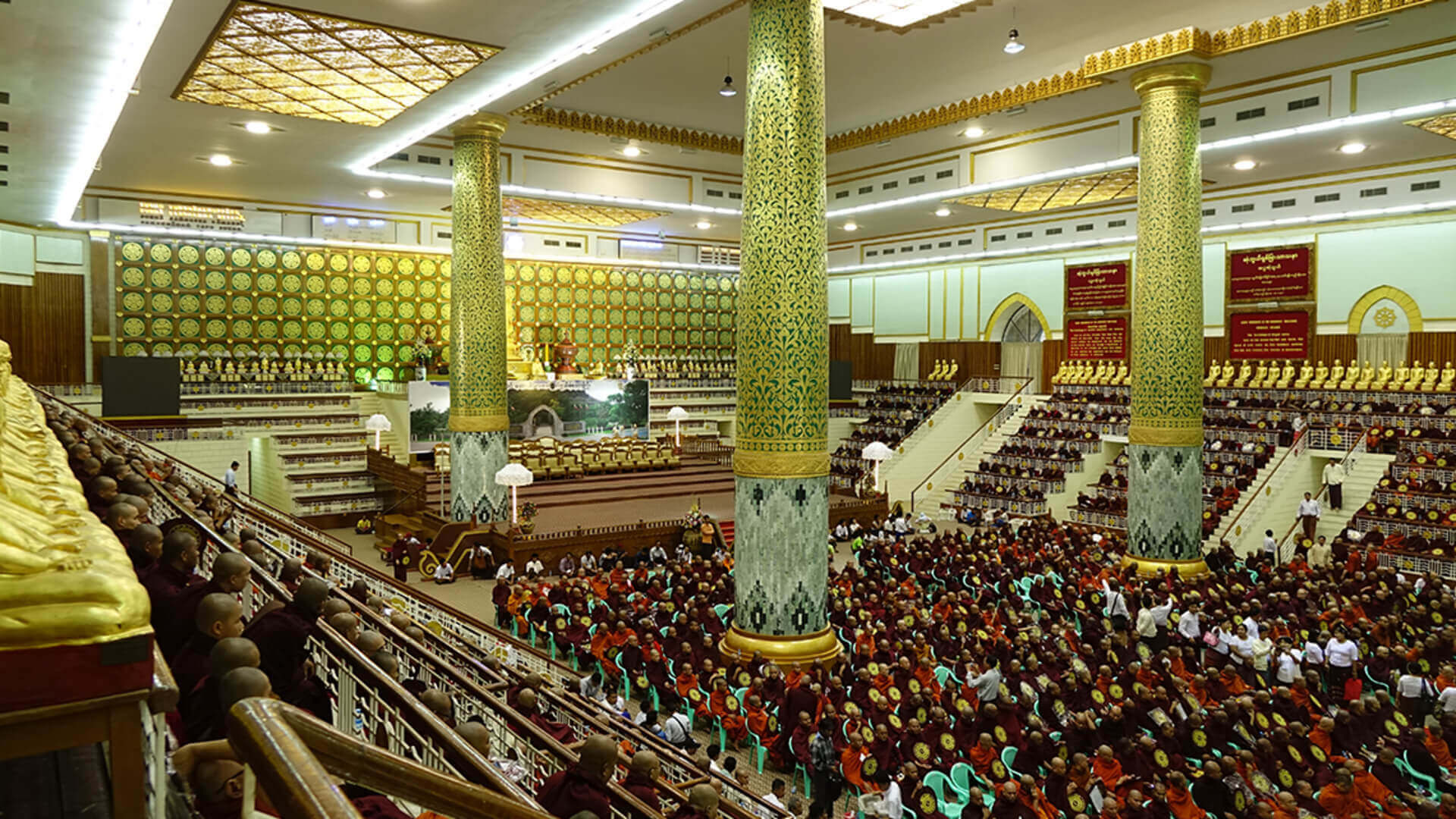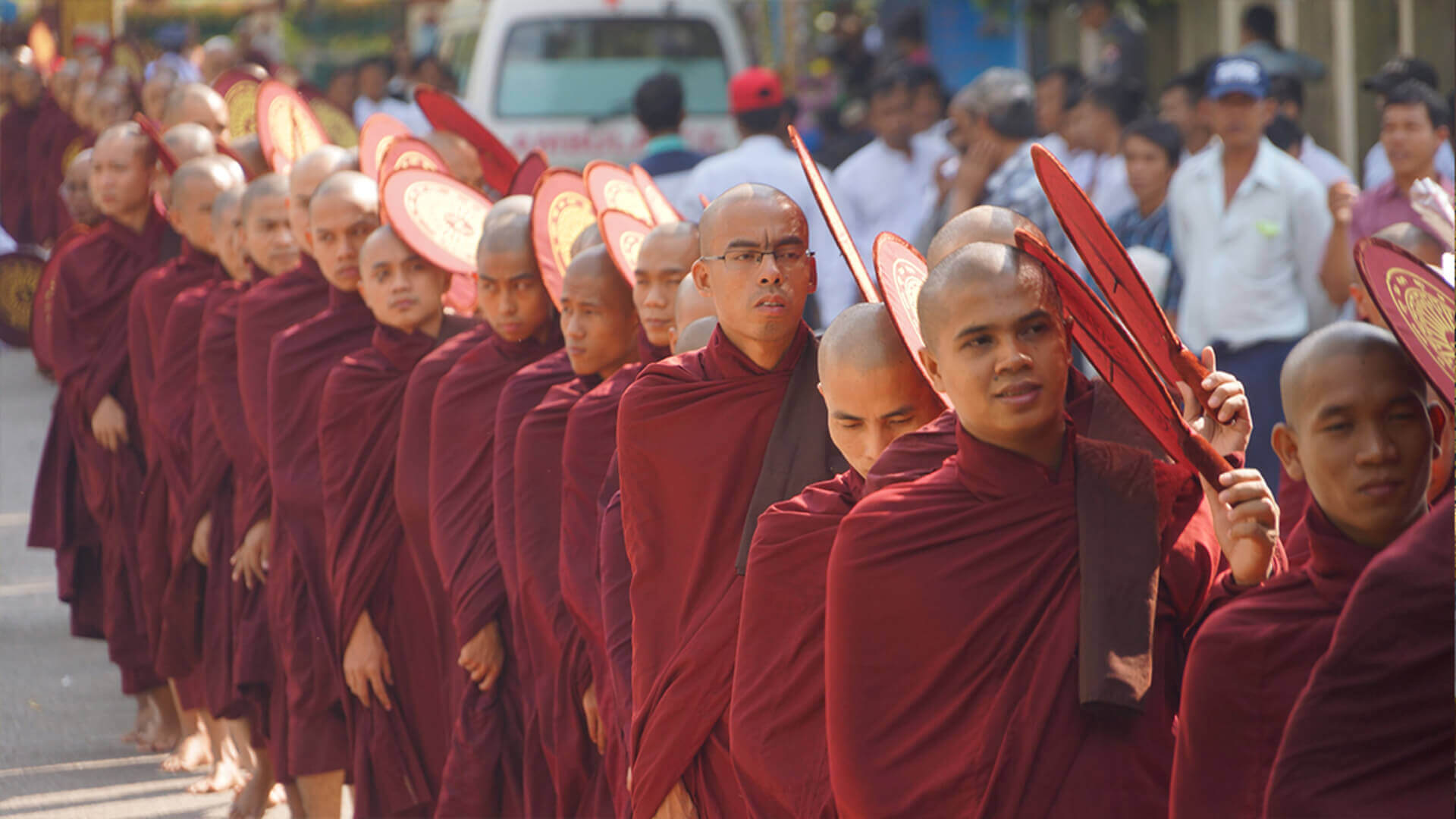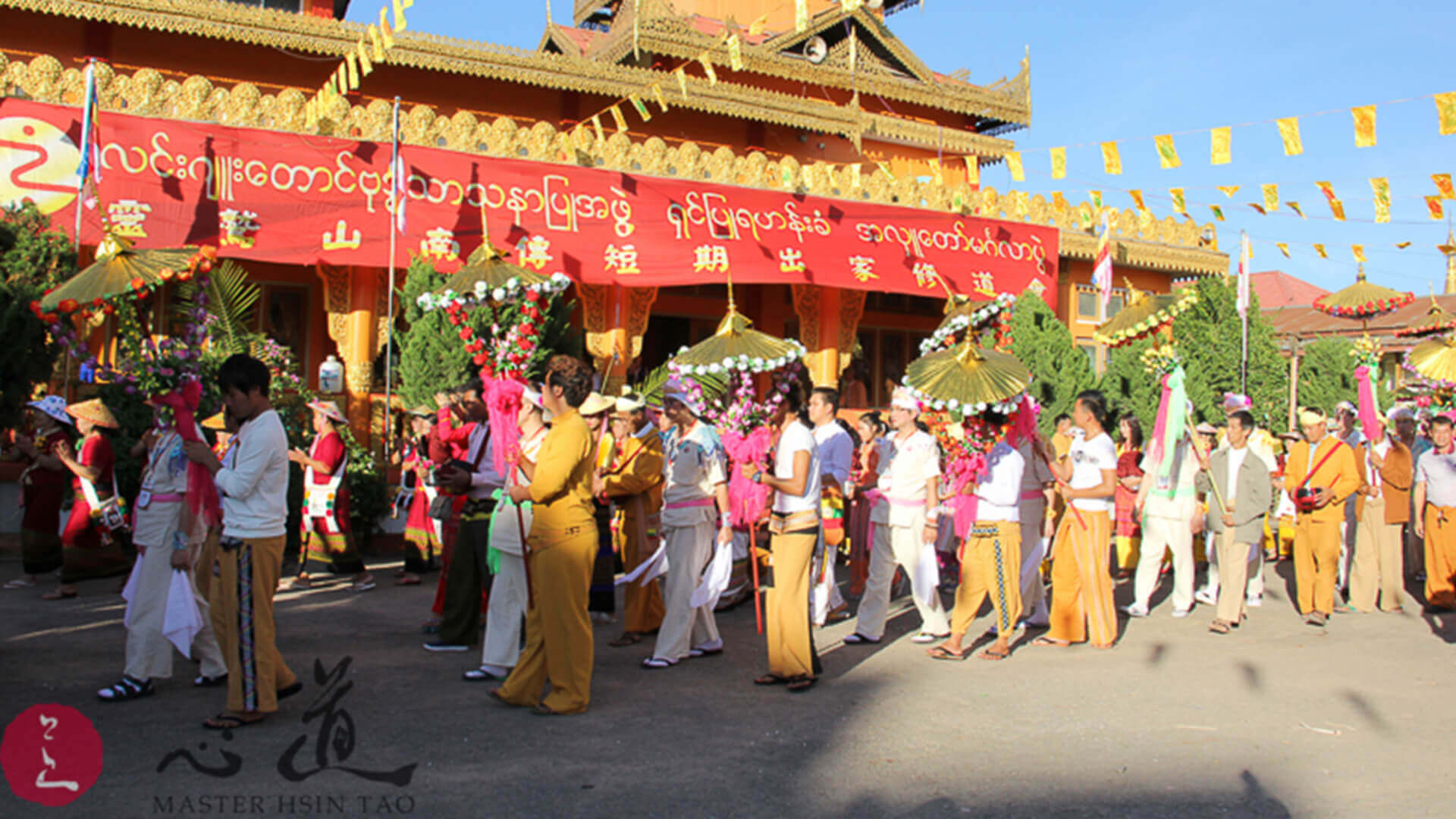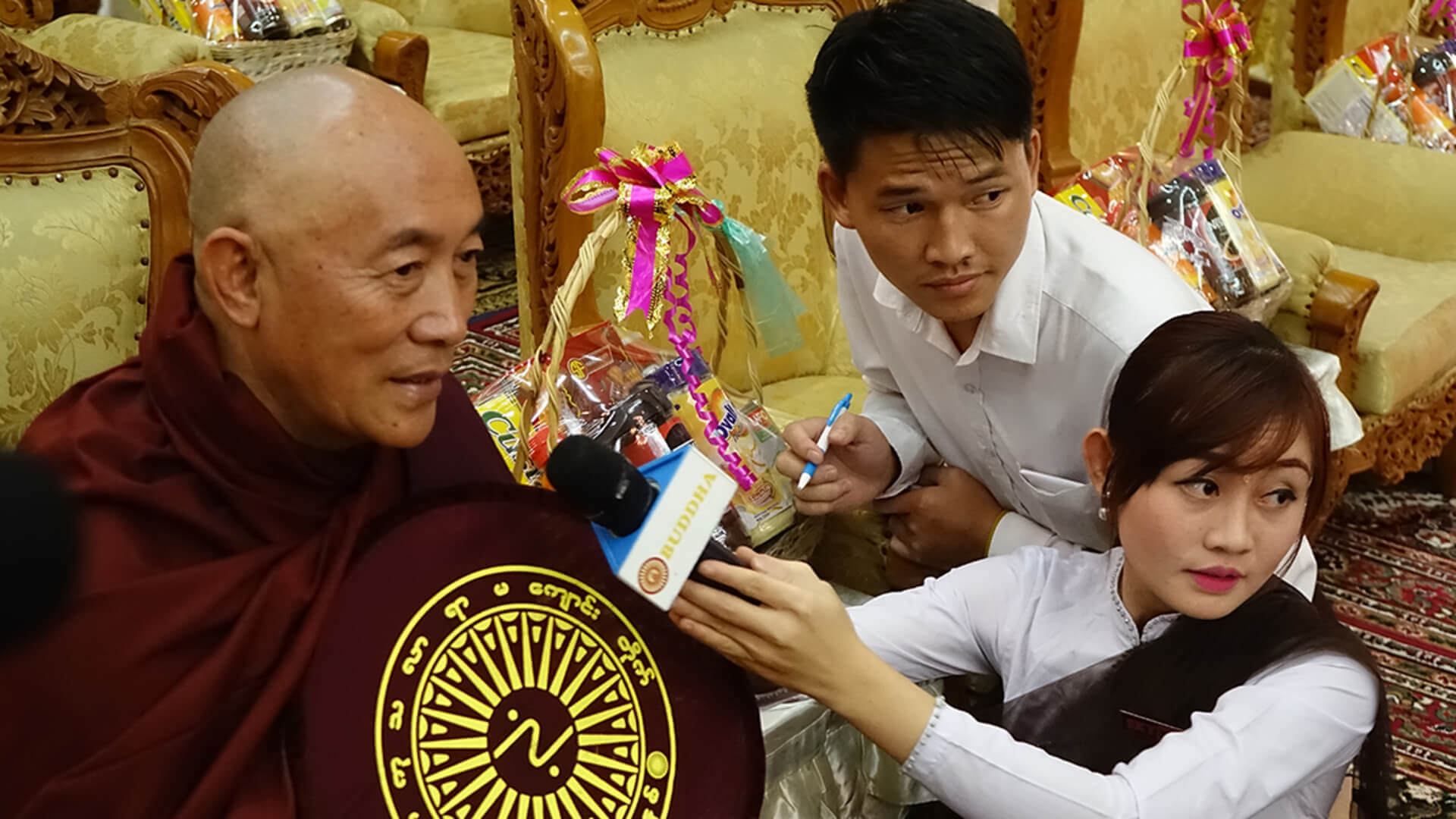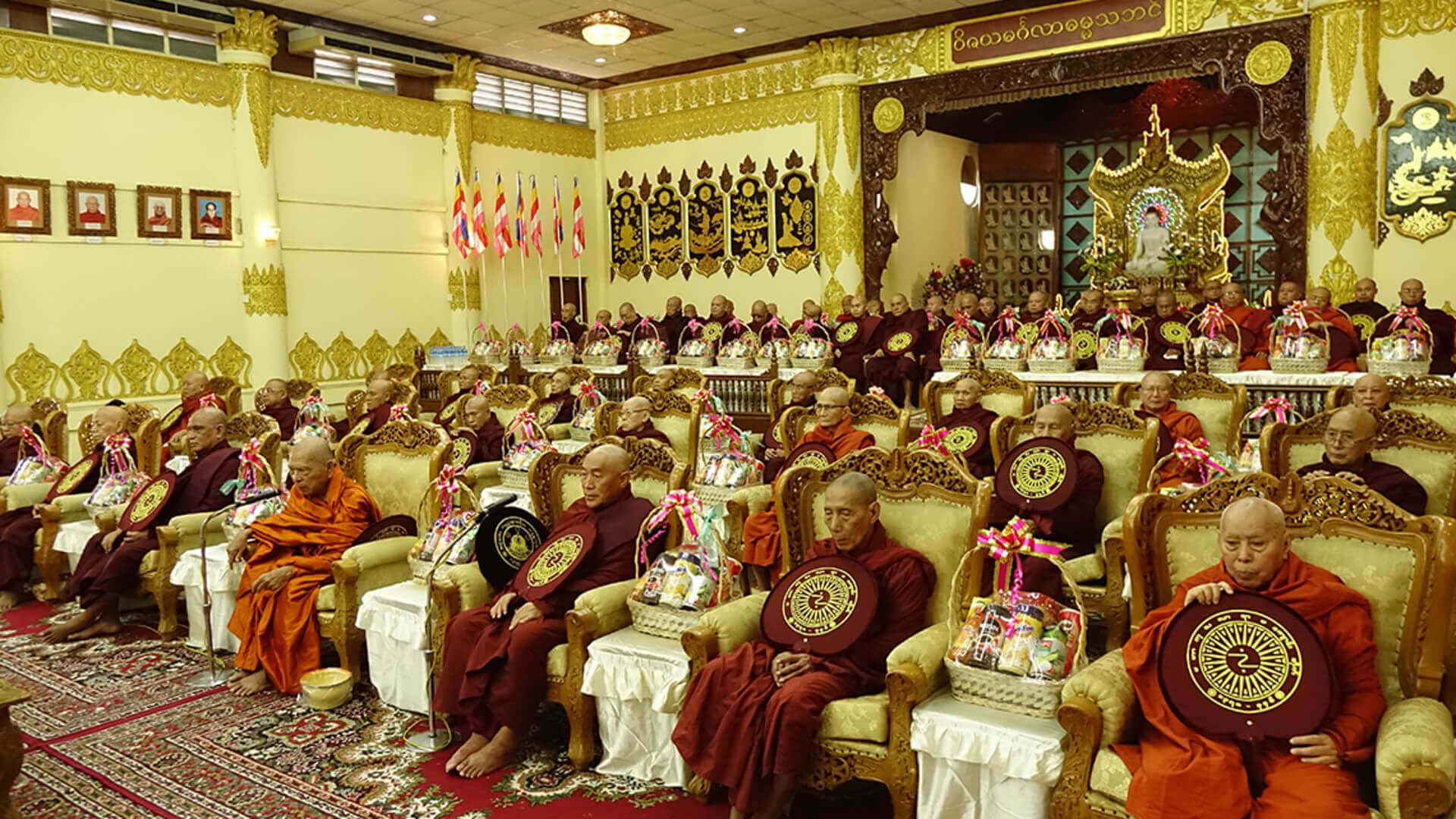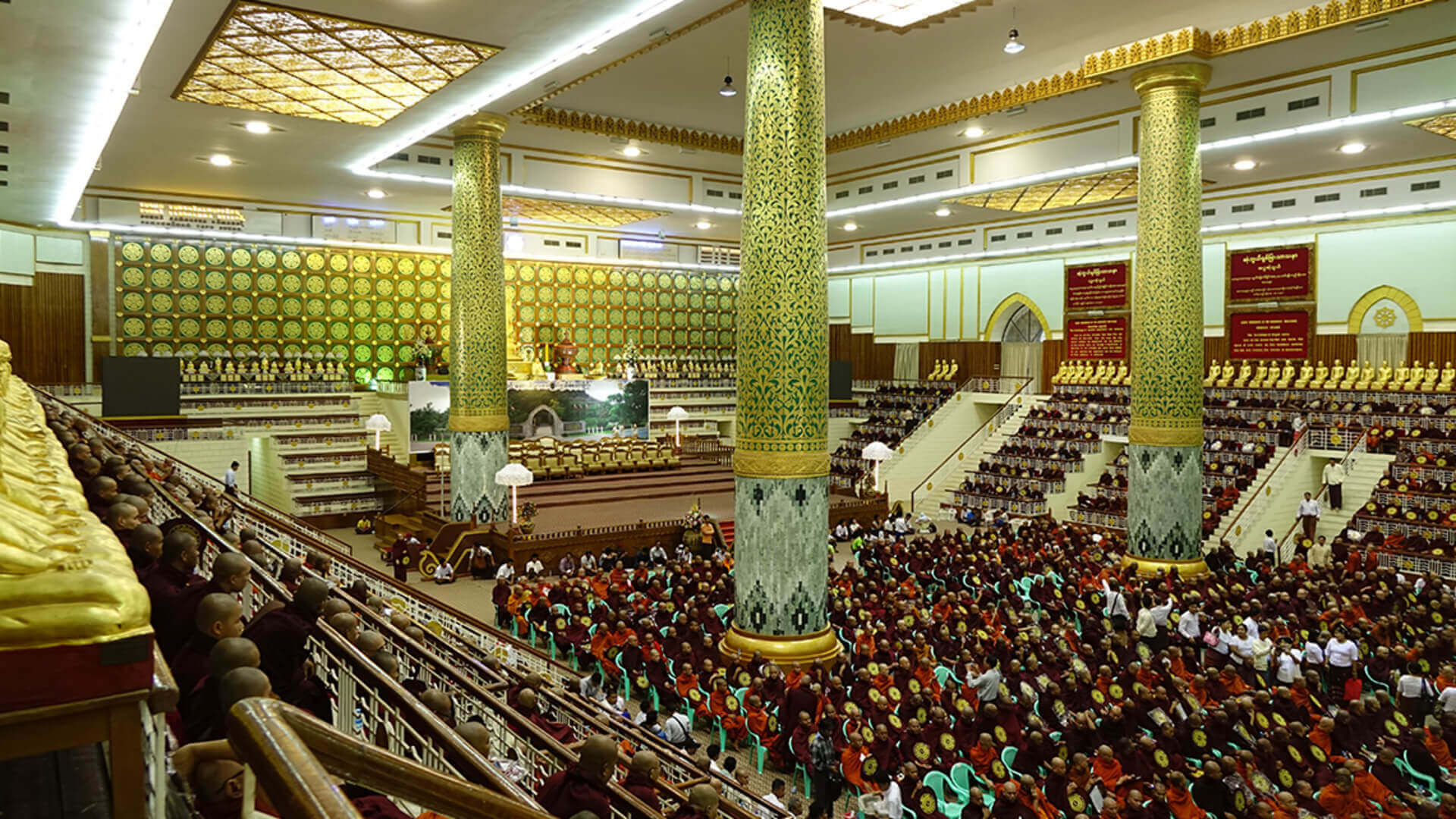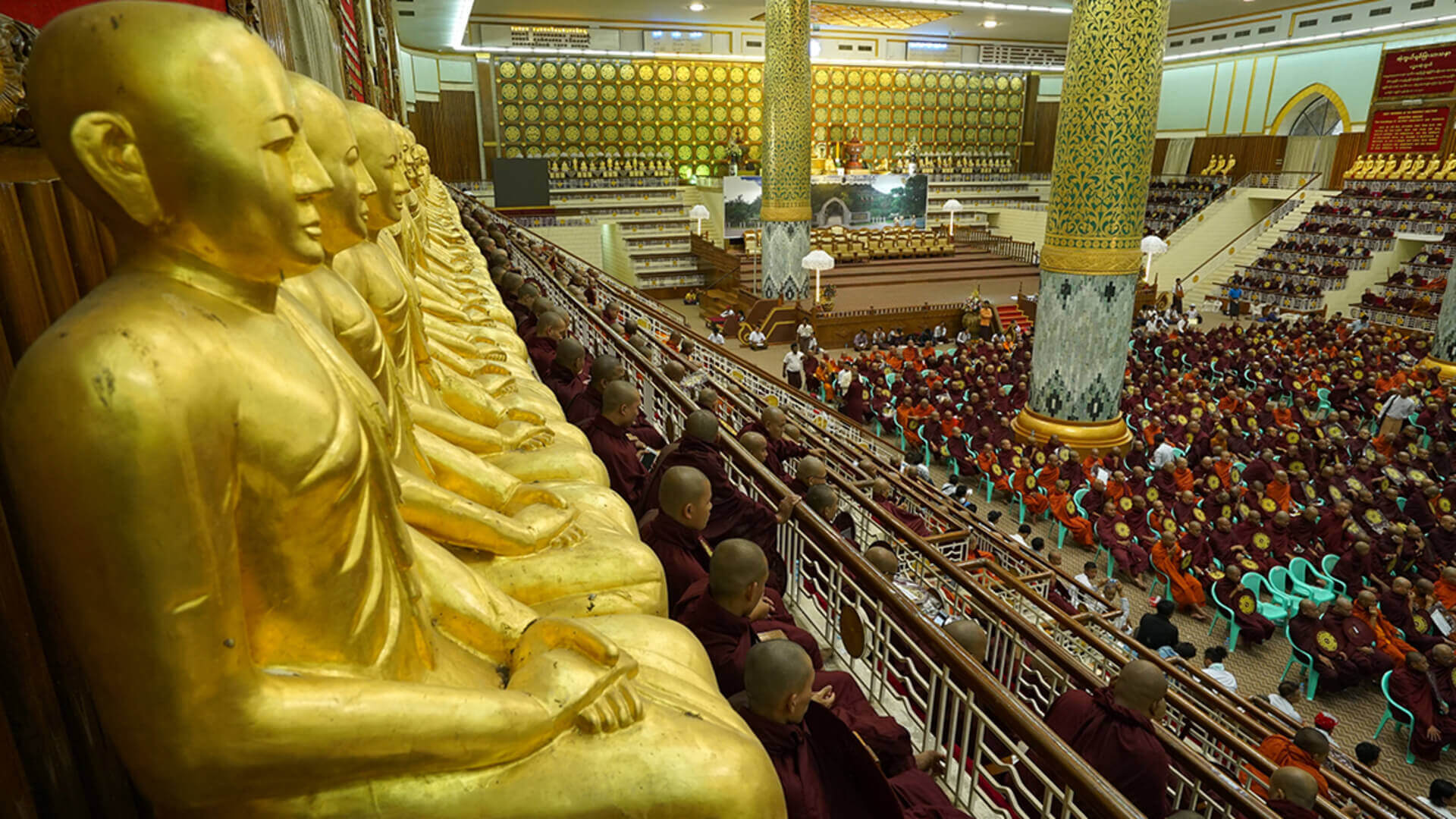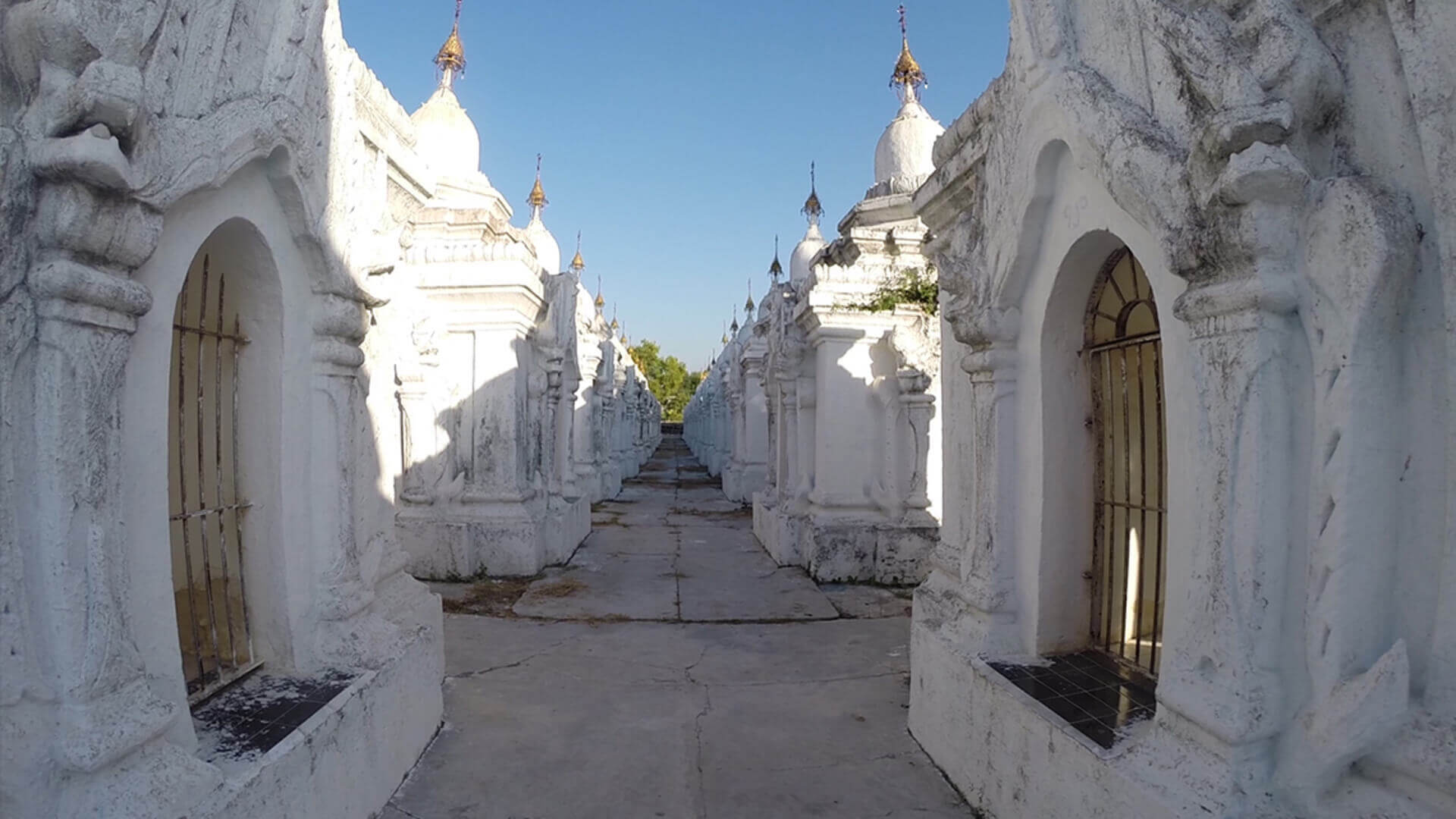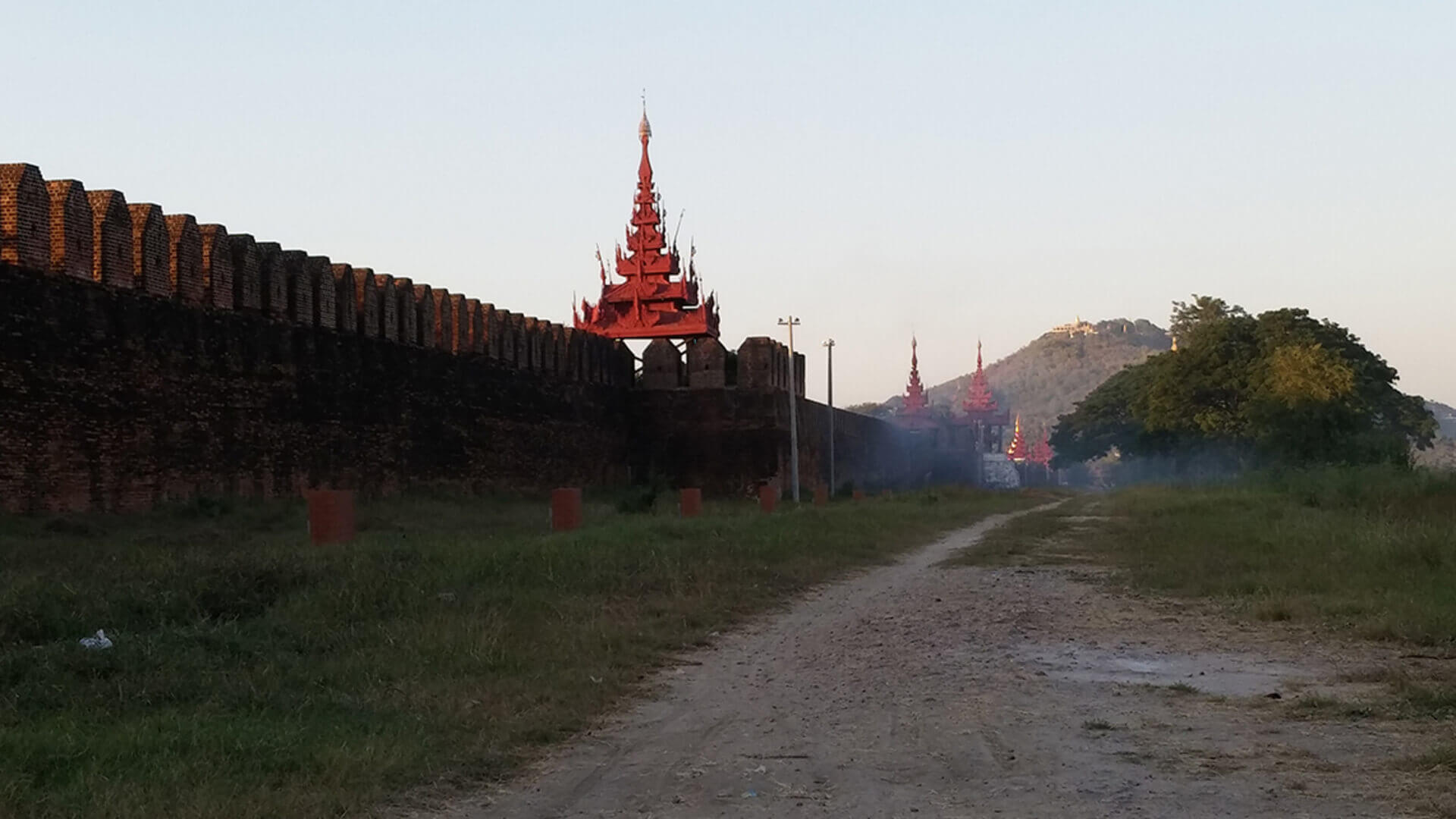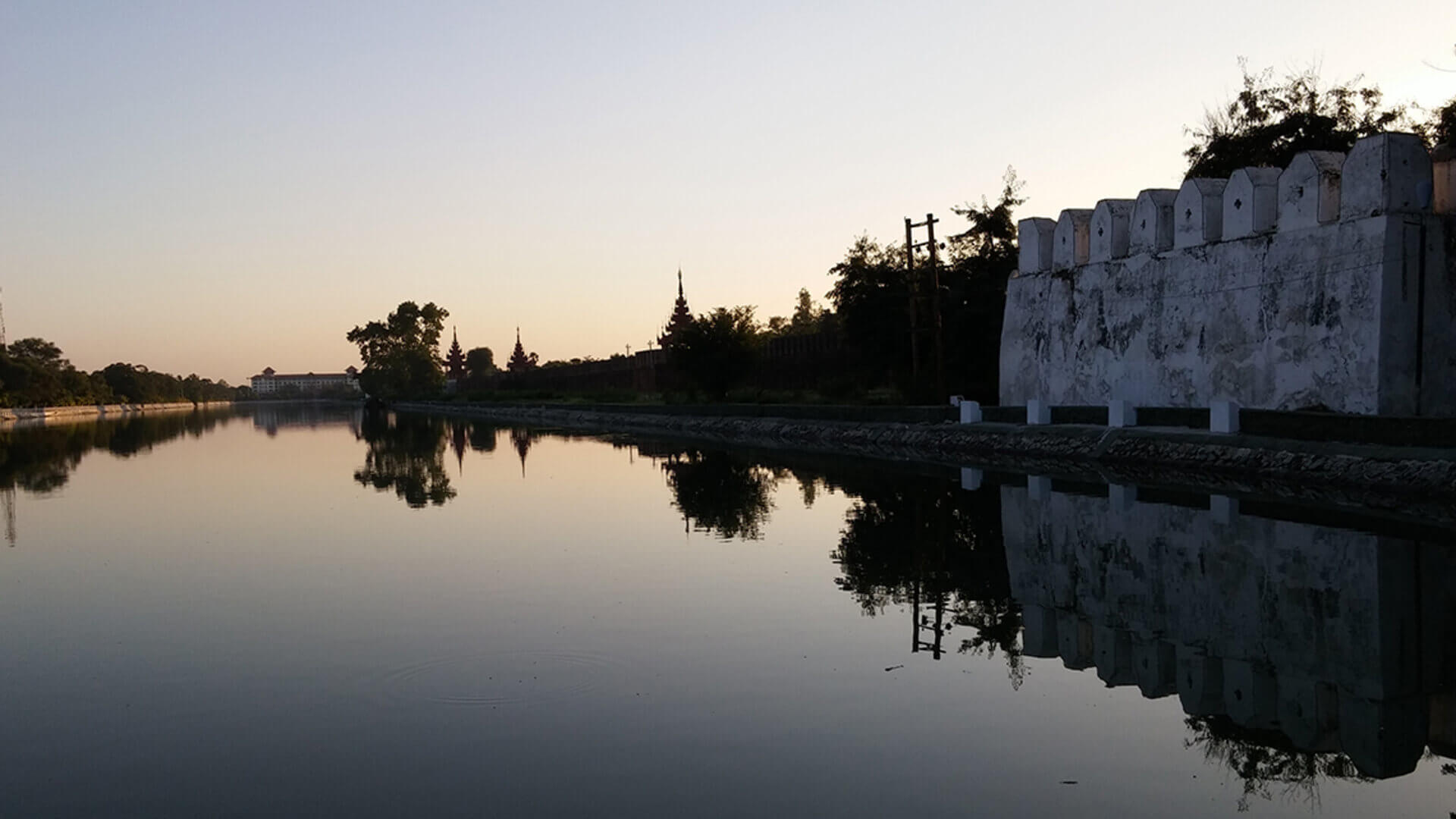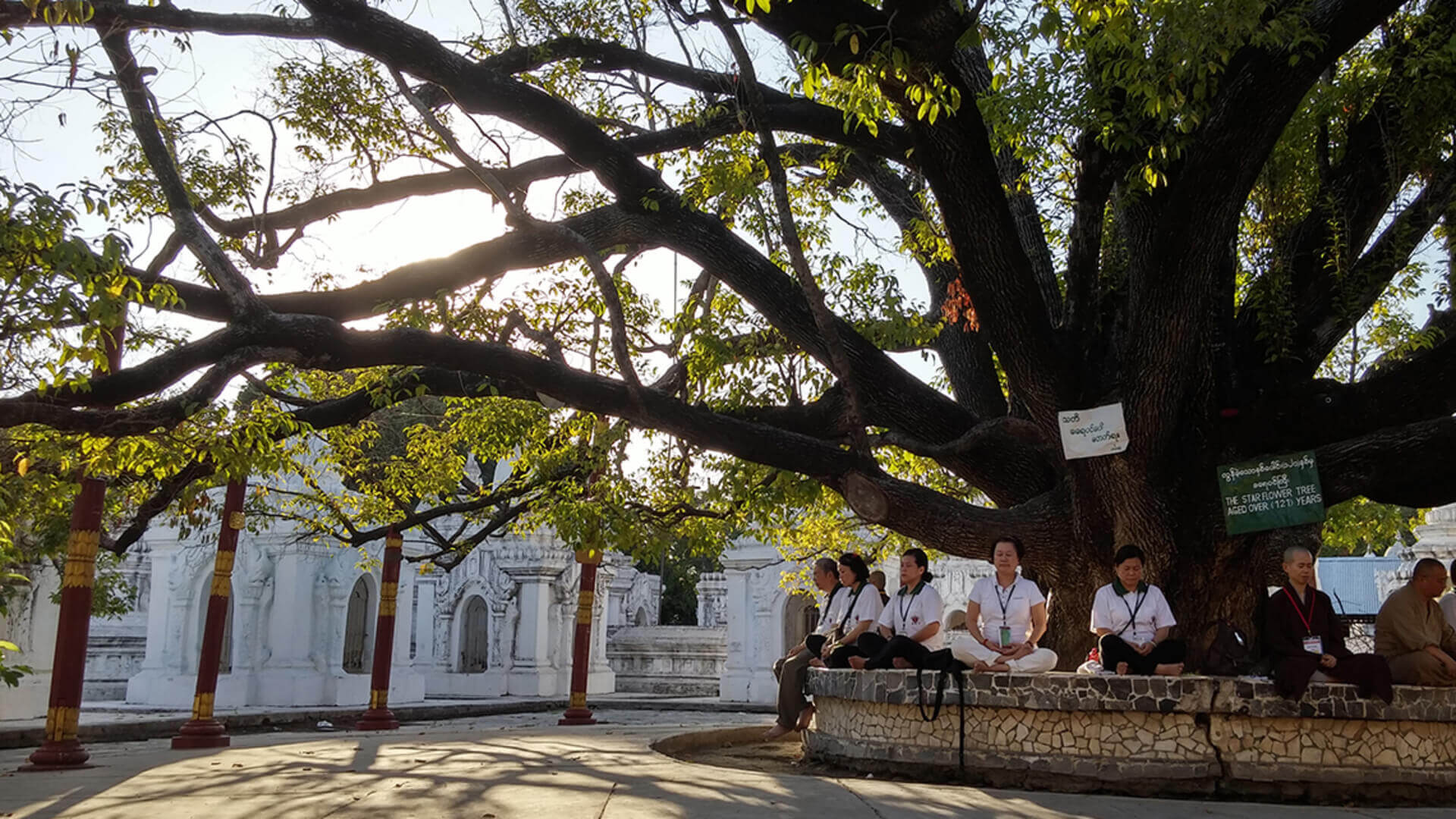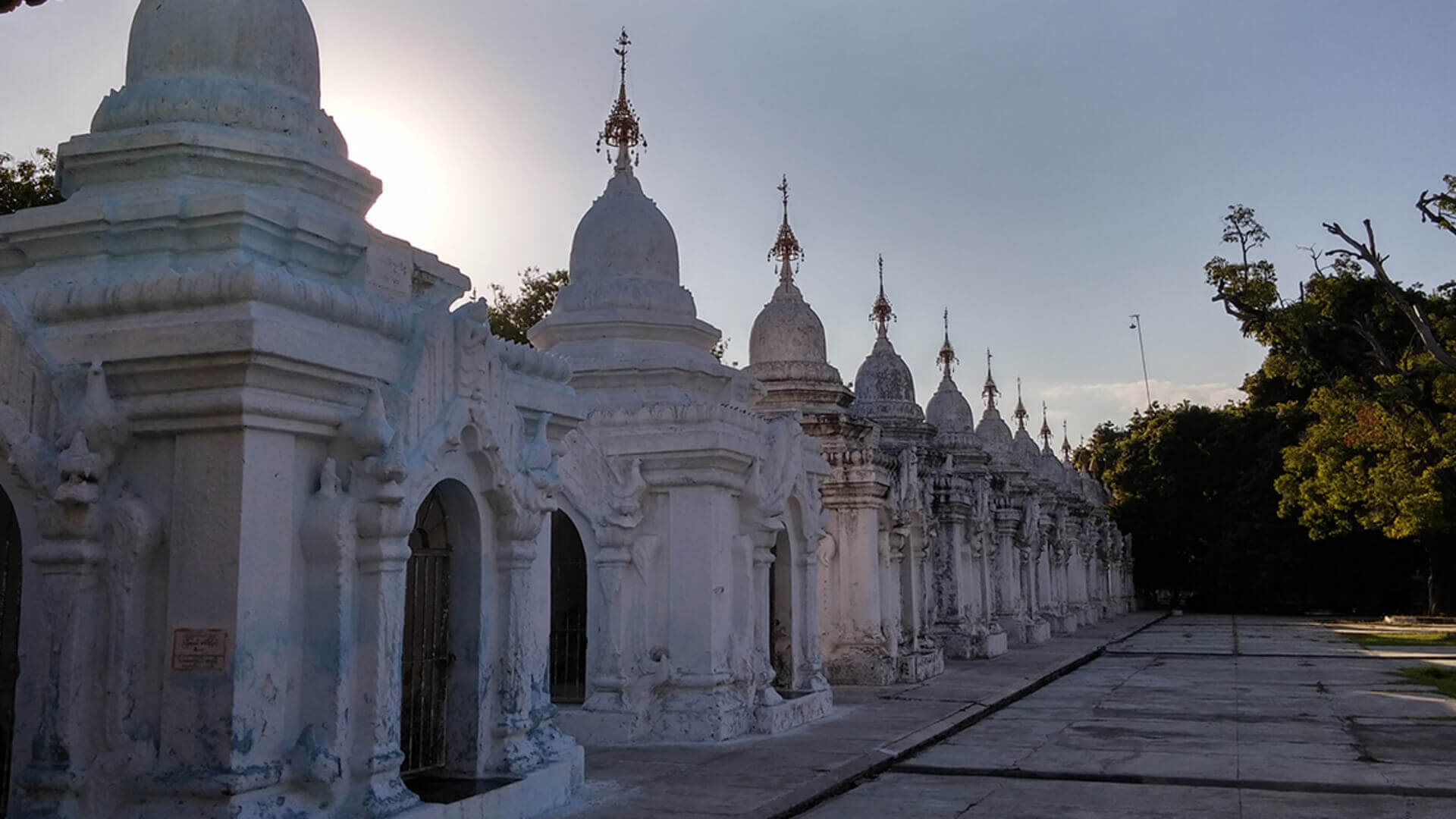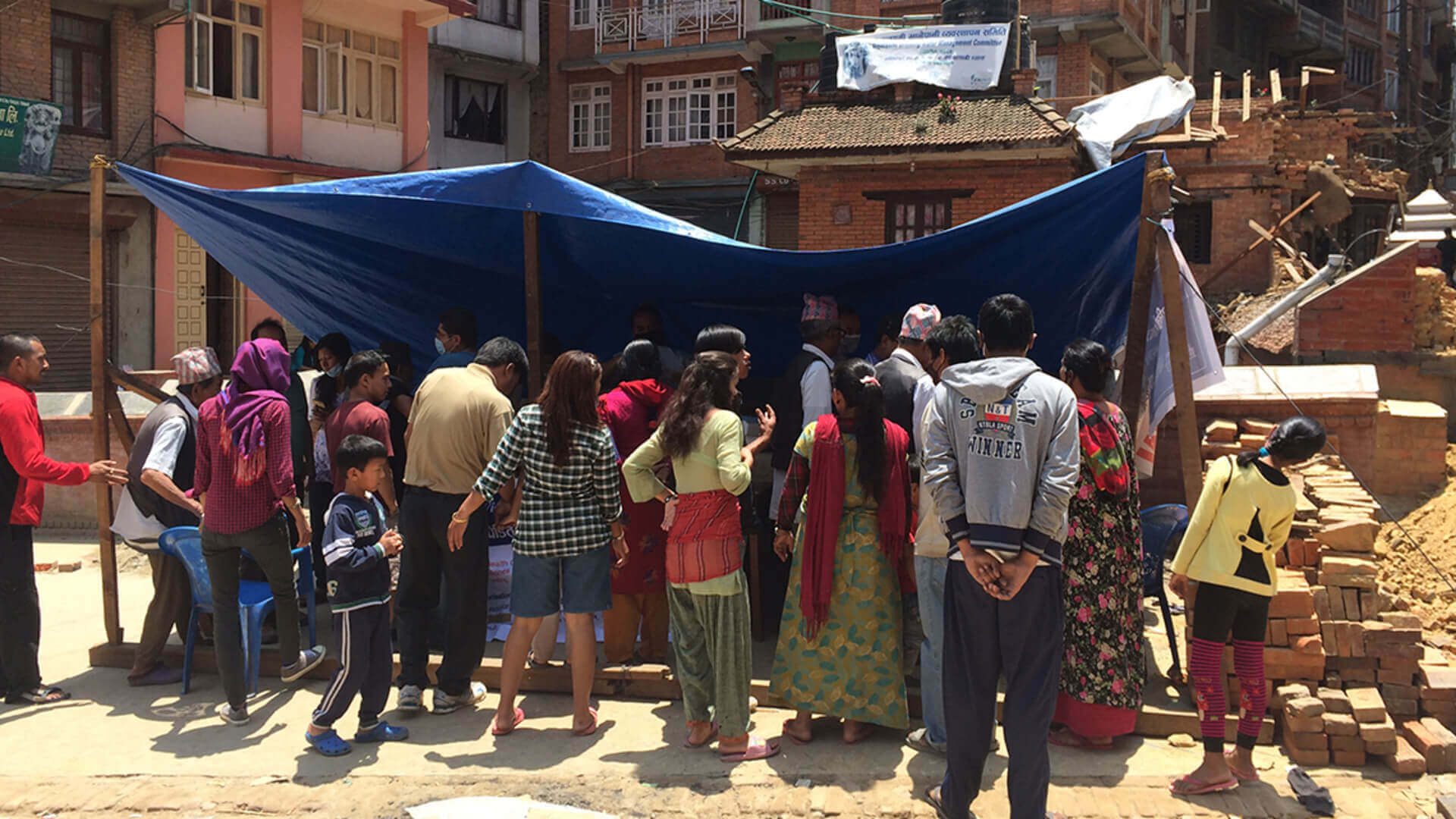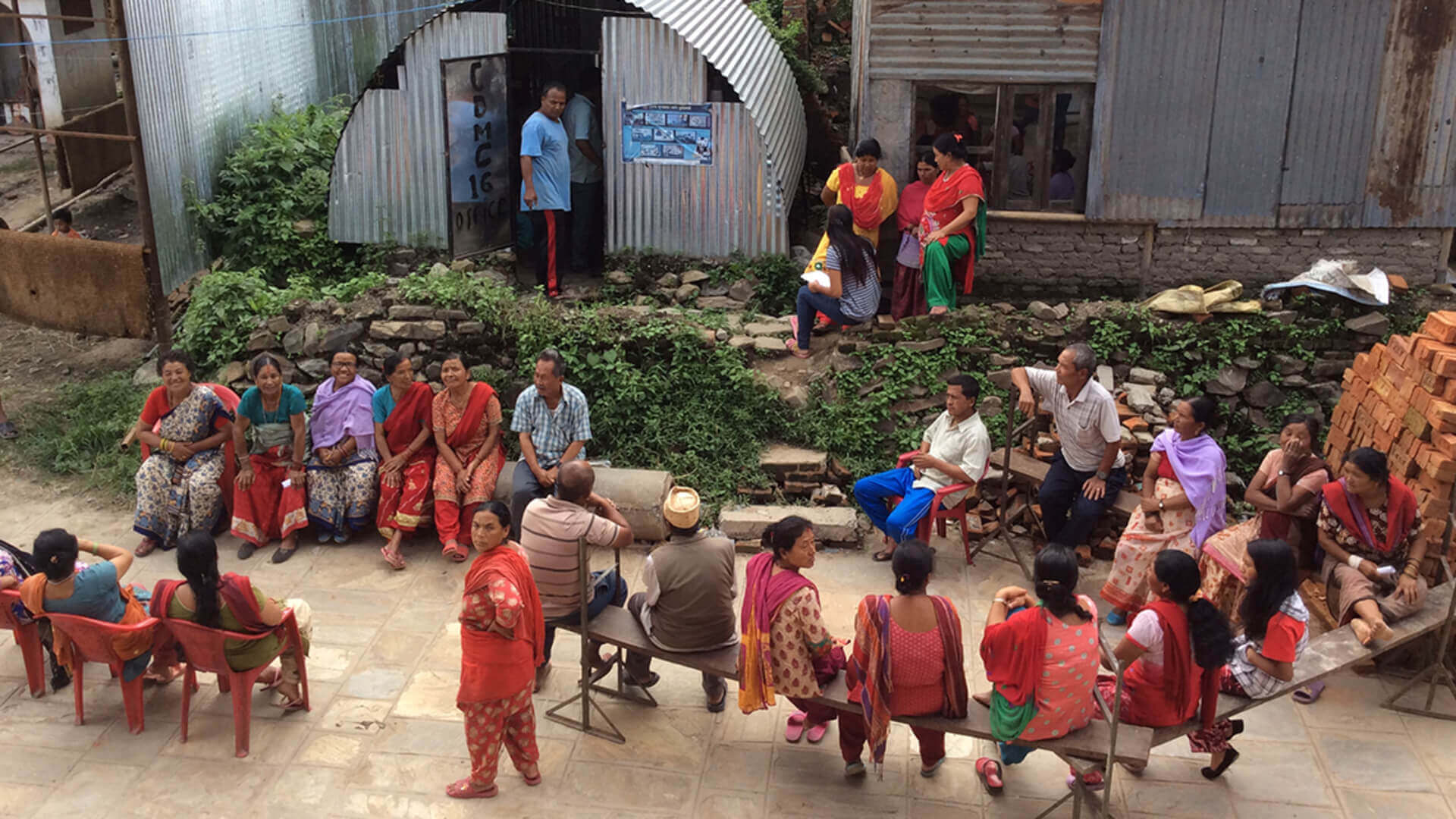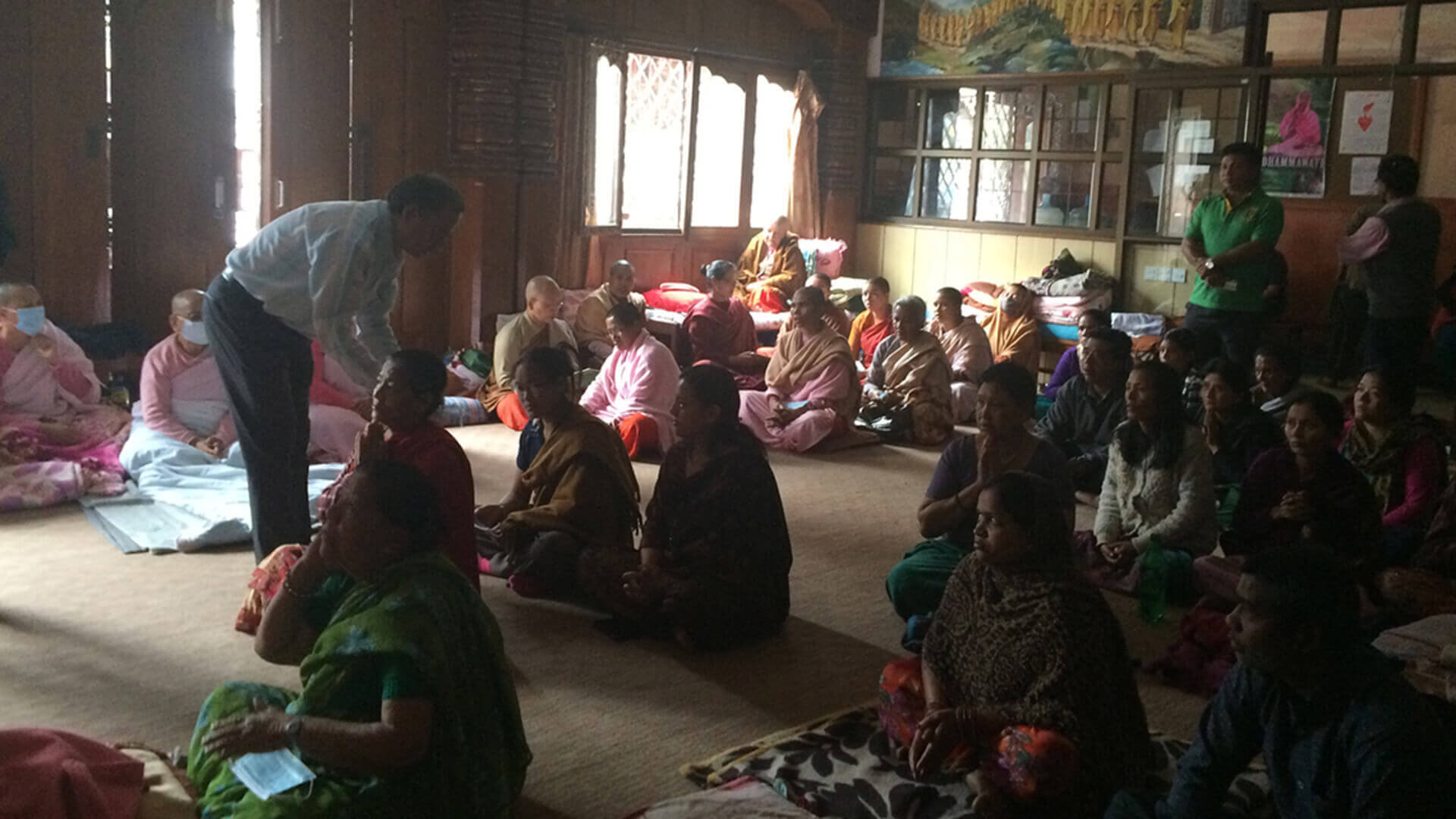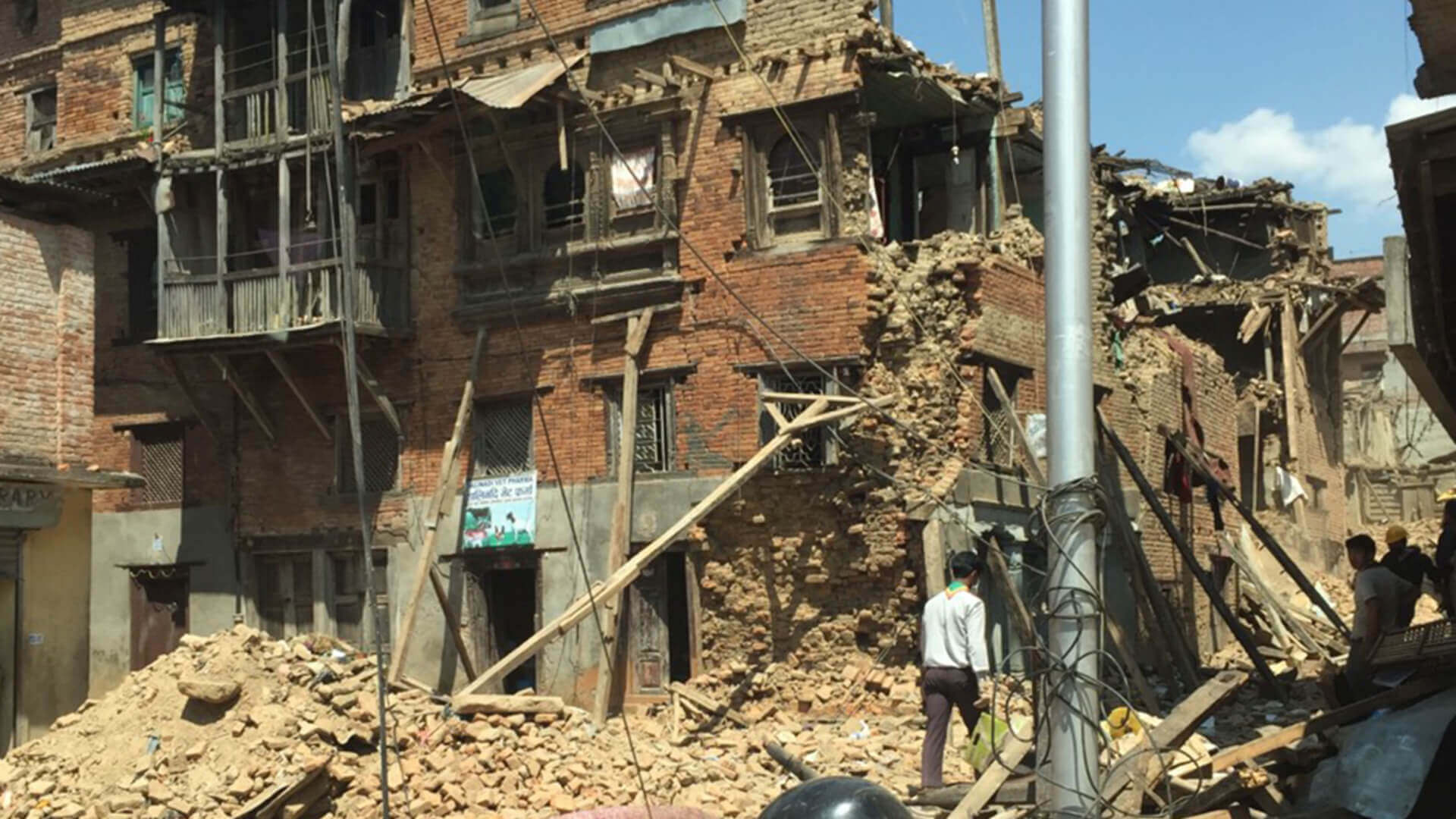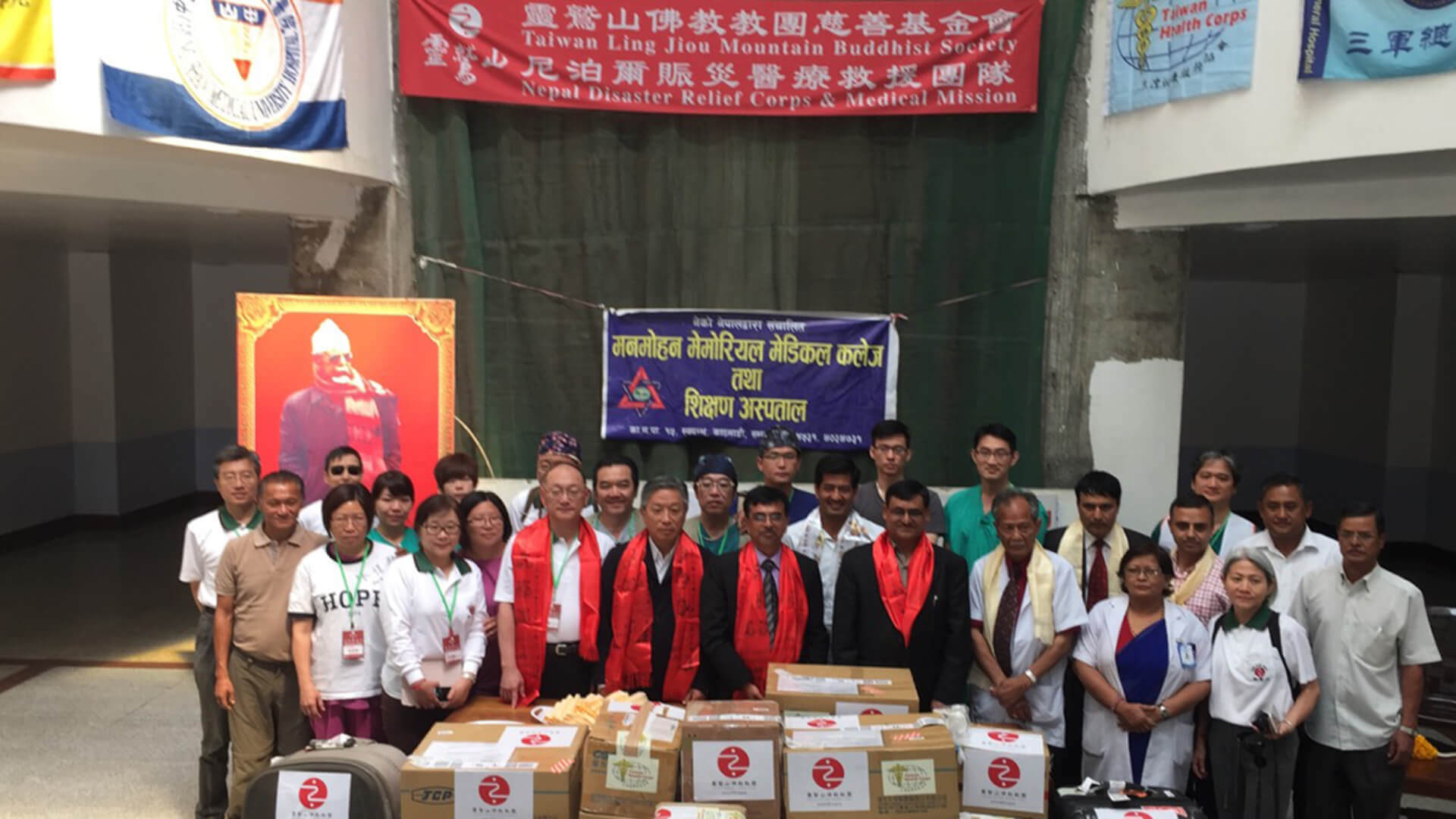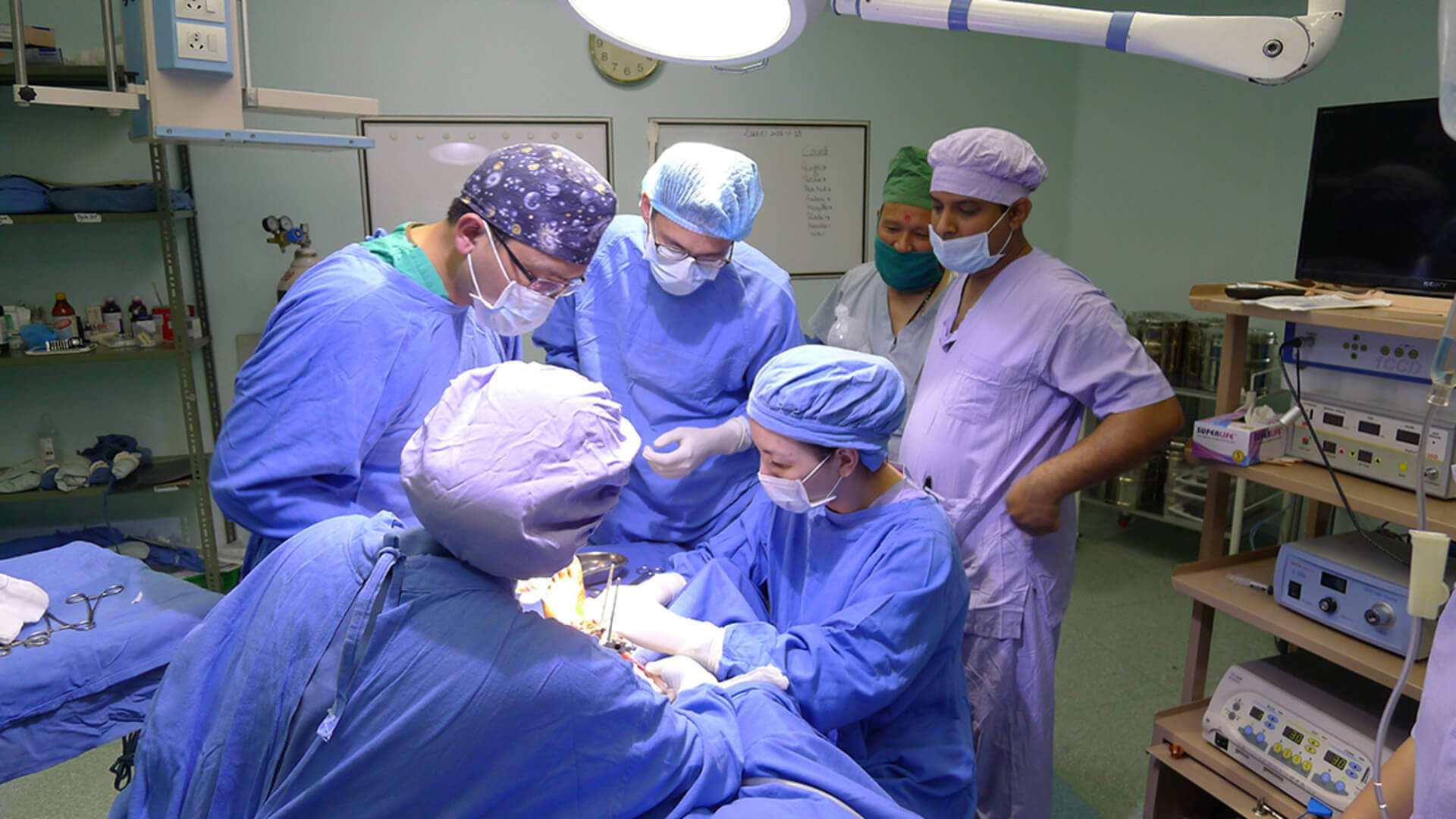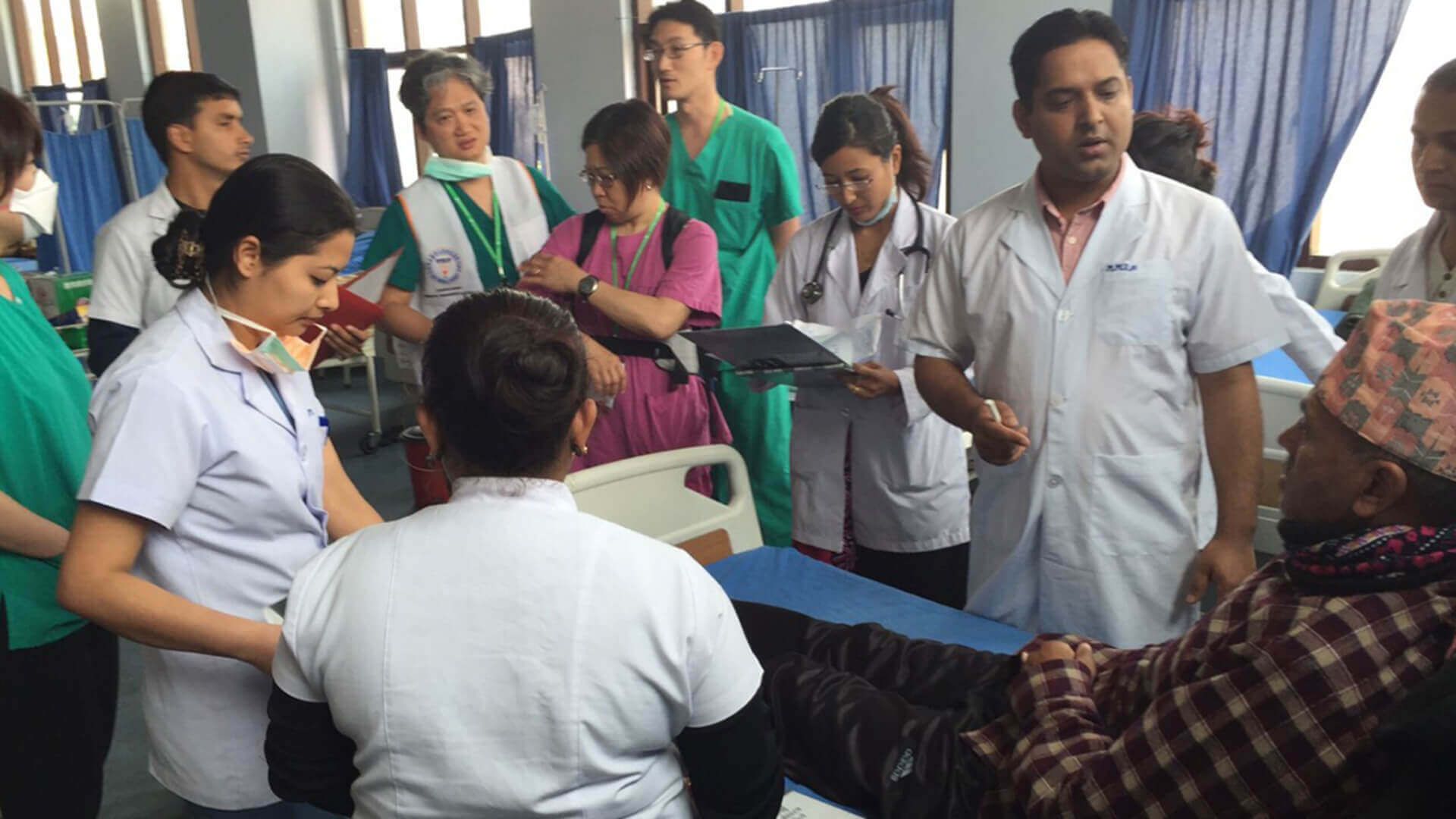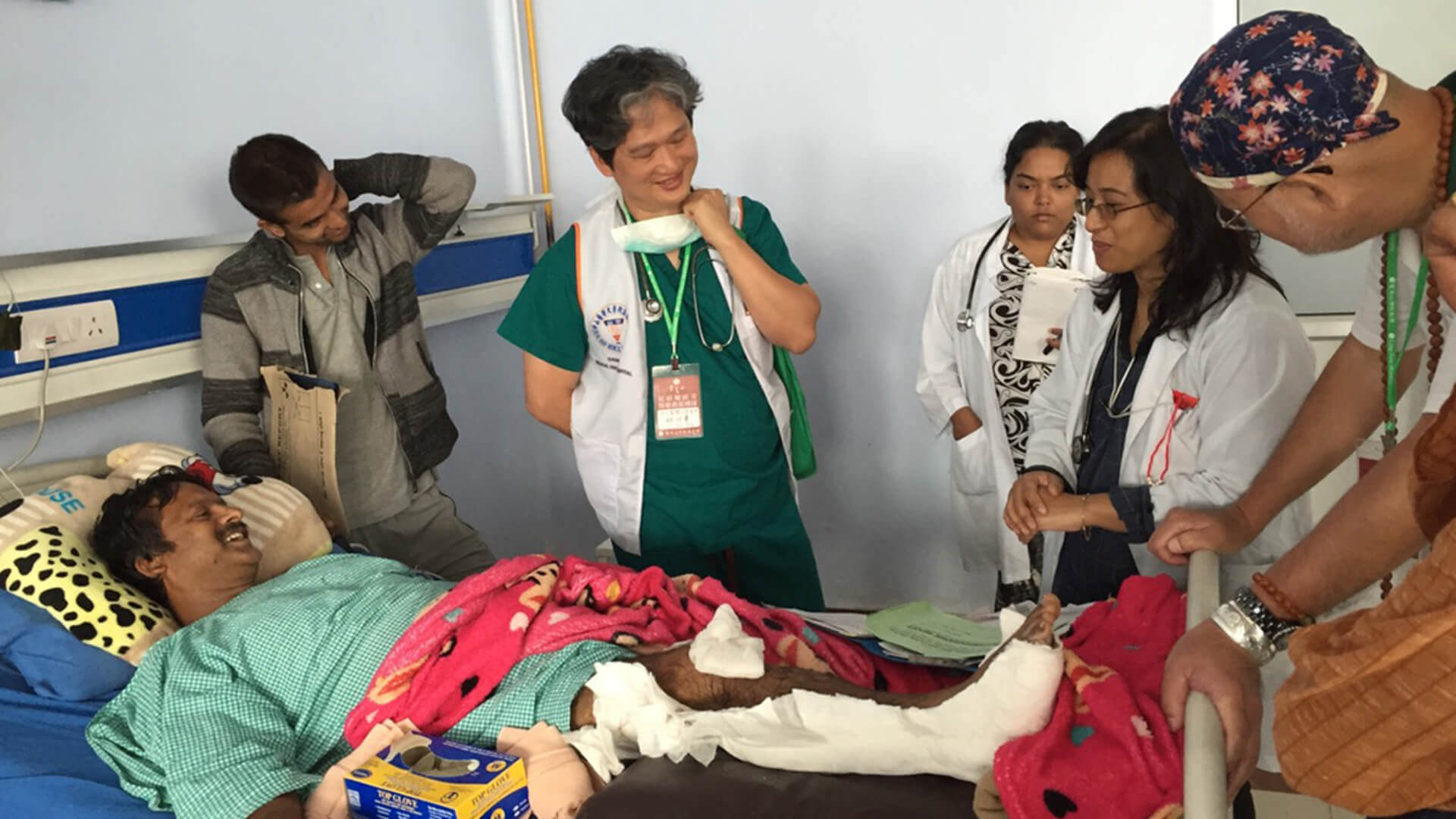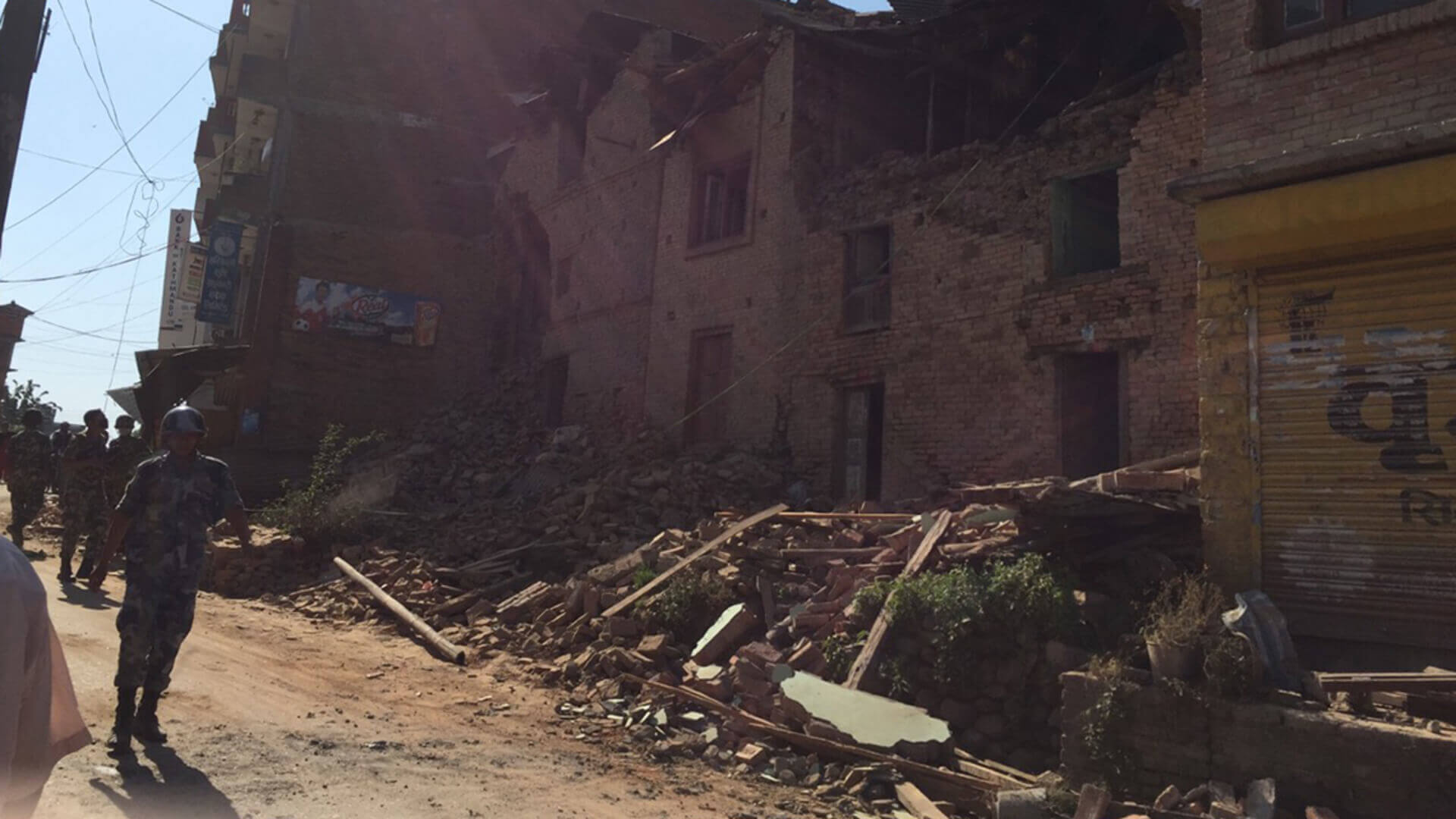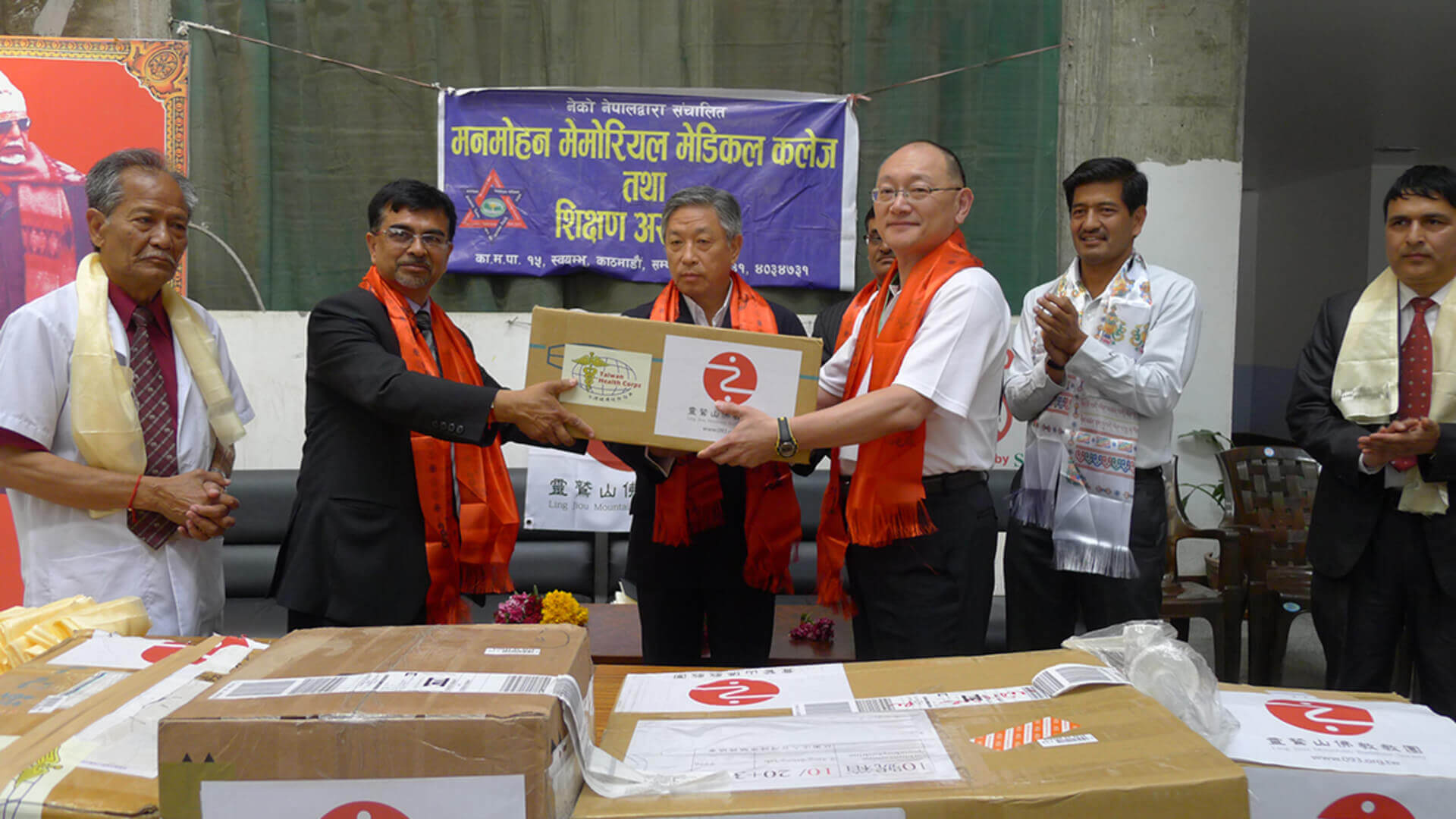International Relief Campaign
The “Caring for the World” series is a special program of documentaries that record how the Ling Jiou Mountain (LJM) Buddhist Society has been sparing no effort in doing good for the global village. The program features four major themes: ‘GFLP in Myanmar’, ‘International Humanity Mission’, ‘Revitalization of the Buddha Dharma’, and ‘Love the Earth’. Collectively, these documentaries present how the LJM Buddhist Society under the guidance of Ven. Chan Master Hsin Tao has been endeavoring to translate and manifest Buddha’s compassion into concrete care for our world, and as solid help with love for the planet we live on.
Firmly committed to the ideal of “Love and Peace”, Master Hsin Tao has been appealing to the world for people to optimize the innate compassion we are born with, by transforming it into selfless love, and to care for the world from within our own peaceful state of mind. Master Hsin Tao also promotes the outreach idea that we connect the positive mindfulness the world over to help untie dusted knots in the dark corners of people’s hearts. Further still, we spread seeds of peace around the world to share and pass the love on, so that bountiful fruits of good karma will fill up our planet to be a world worthy of the Avatamsaka world- “Love and Peace / the World as One Family”.
An international initiative of the LJM Buddhist Society, the Global Family of Love and Peace (GFLP), was founded in 2003 and is an NGO dedicated to the promotion of Buddhist spiritual education and life-saving services. For many years already, the GFLP has been devoting itself to endeavors of international humanitarian mission. Whether it be countries where a lack of medical resources persists, or it be places suffering aftermaths of natural disasters, LJM Corps of Volunteers have since long become a familiar sight. Our unsung heroes often shy away from cameras, but our lenses did manage to capture them hard at work. The way they keep going and giving, tirelessly and selflessly, paint pictures of ordinary people doing extraordinary things that give true expression to the words ‘touching’ and ‘heart-warming’.
It is a matter of course that the GFLP was established to accomplish more than humanitarian tasks. We bear in mind that ours is a Buddhist society and our mission, first and foremost, lies in promoting the Buddha Dharma, and moreover, to revitalize it wherever appropriate. Another endeavor we at the LJM take seriously is the participation in helping to restore sacred sites. For example, the Buddhas of Bamiyan in Afghanistan. Their destruction in February 2001 was a disaster to mankind’s civilization. GFLP signed up to join other like-minded NGO’s for voluntary restoration work on-site. We earnestly hope that our participation will contribute to a successful restoration and that the world can again be awed by the grandiosity and magnificence of the Buddhas of Bamiyan.
In terms of duty and obligation, it falls on everyone’s shoulders to care for the Earth often called our common home. That said, what can we do for our planet? Master Hsin Tao is of the opinion that in basic Buddhist life guidelines there is the percept to not take the life of any sentient beings. It involves compassion that respects life, but it has more to do with the notion of ecological balance from the perspective of a common life community. Accordingly, equal respect ought to be given to beings minute as micro-organism, or gigantic as the universe.
It stands to reason, therefore, that we need to love selflessly out of compassion, and we must bear the responsibility to make the Earth safe again for having made it sick in the first place. GFLP proactively advocates the idea of “Healing the Earth” - a campaign that consists of integral parts like 'Loving the Earth’, ‘Green Chan Diet’, ‘Naung-Mon Organic Lifestyle’, plus other undertakings that benefit life. “Healing the Earth”, therefore, is hopeful that seemingly insignificant small changes in everyone’s lifestyle and consumption habit can in effect pool together to transform our planet into what GFLP literally stands for, and ultimately reach on earth the Utopia of diversified symbiosis.
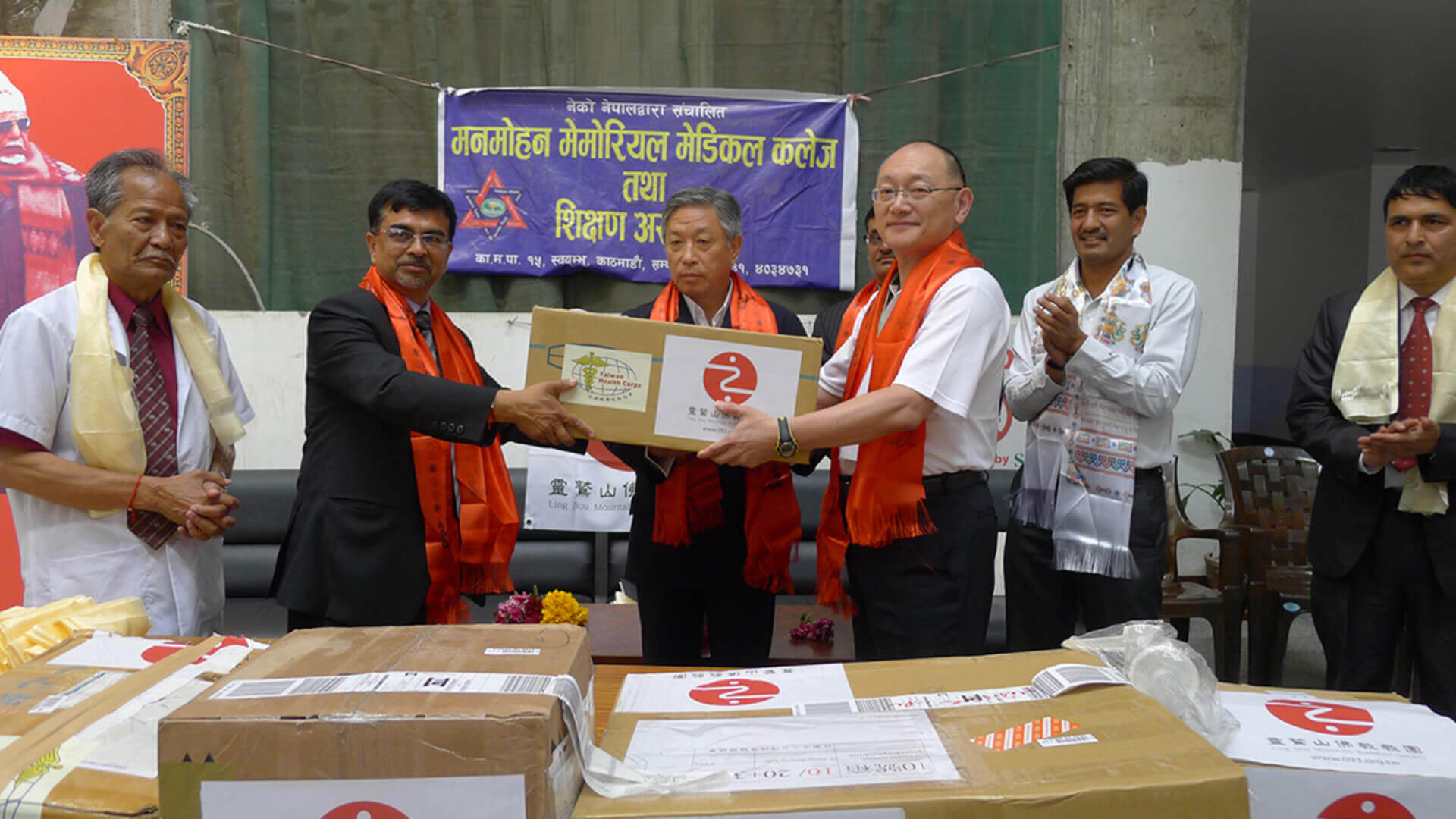
Our International Relief Campaign
Natural disasters and man-made calamities have been striking more frequently in recent years, and the restlessness from people’s heart keeps giving rise to conflicts that erupt between people, and between people and nature as well, putting us earthlings and sentient beings to more frequent tests by one harsh crisis after another. The imbalance plaguing our planet stems in effect from the human greed, anger, and stupidity among other wrongful desires. In response, the Dharma Master calls out to us to restart from the heart and really pay attention to the land we live on, to Mother Earth. Against that background, the Ling Jiou Mountain (LJM) established an NGO by the name GFLP (Global Family for Love and Peace) to proactively implement emergency relief and rescue actions at home and abroad. The international charity foundation and its work eloquently speak for Master Hsin Tao’s compassion, care, and dedication to services.
The LJM Charity Foundation monitors its radar for international adversities both natural and man-made and acts swiftly by appropriating resources for help at home and abroad. “To Myanmar with Love & MediHelp” is an LJM initiative in recent years that aligns with the medical staff of the Chang Geng Hospital and its outreach mechanism (the Fu-Jih MediCorps) to offer professional medical services free of charge to the Naung Mon village and a nearby temple, both in direct vicinity of Lashio in northern Myanmar.
Upon the advice of Master Hsin Tao, disaster relief for areas affected by the mega earthquake in Nepal in 2015, for instance, was dispatched in the shortest time possible. Spiritual help to heal the pain of loss was offered alongside medical assistance, and via its intensive on-ground co-operation with Nepal’s Manmohan Memorial Teaching Hospital, professional skills and medical expertise were shared on, and medical equipment and materials were donated to facilitate post-trauma reconstructions. A solid foundation was thus cemented to benefit long-term future co-operations.
When a person manages to rid him- or herself of sufferings and attain happiness instead, the learning curve can help guide other sentient beings in repeating the same experience slowly but steadily. It is our hope that the LJM humanitarian relief and rescue work can instill new hope in the life of those immediately affected so that they can appreciate true care from total strangers and learn to spread and share on that belief in the touching experience. This is what we’ve learned from Bodhisattva Guanyin (Avalokiteshvara) and the spirit of the axiom or promise of redemption: ‘great mercy and great compassion / upon hearing the sentient beings’ cries for help, rescue relief from sufferings are extended’. Our pledge is, therefore: wherever the need for help arises, the LJM will be there to help.
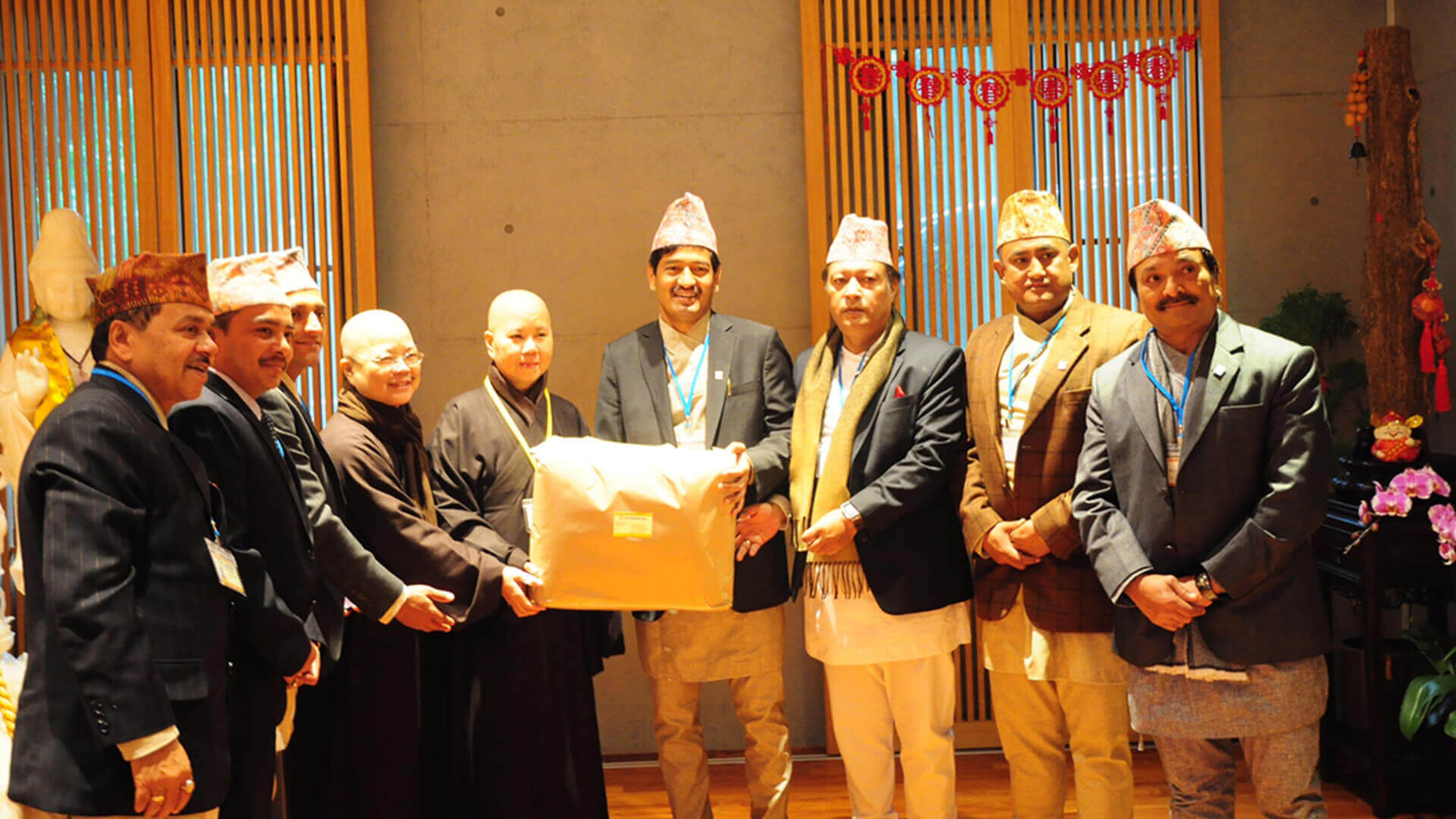
Mega Quake in Nepal 2015
The legendary birthplace of the Buddha, Nepal, was hit by a once-in-a-century mega earthquake that measured 8.1 on April 25, 2015, leaving severe destructions behind. Master Hsin Tao ordered quick response and immediate team-up with the LJM outpost, the Milarepa Meditation Center, to move into the hazard zone and help devastated victims pull through the adversities.
The LJM Charity Foundation dispatched a medical corps to work closely with a leading local hospital, the Manmohan Memorial Teaching Hospital (MMTH) and started going about disaster relief work right away. The LJM task force assisted in major surgeries on E.R.-grade victims, performed medical treatment for clinical exchange, donated medical resources and materials, etc. Besides professional medical support on-site, future co-operation ranging from support for medical technologies to know-how transfer. The operation delivered urgently needed aide to those in suffering and laid down a solid foundation for long-term future co-operation.
The LJM task force was working closely with a local counterpart, the civil body ‘Joy Foundation Nepal’ to deliver large quantities of material support to and for the disaster zone. The experience led to the signing of an MOU for future co-op as each other’s ‘Partner by Alliance for Disaster Relief Services’ to focus on medical services among other charitable causes.
To commemorate on the partnership and to give expression to the gratitude for the help and support Nepal had received for the mega quake, the Joy Foundation Nepal commissioned to have two bronze statues cast in the image of the Bodhisattva with a thousand hands to be presented as a gift to the LJM for Master Hsin Tao and the LJM Charity Foundation. The gift was formally presented on January 25, 2016, and the ceremony took place at the Hua Tsang Vihara (re-named the Yuan Tong Shrine after the renovation) of the Wu-Sheng Monastery at the LJM Headquarters. The pledge on the occasion promises to see both parties remain deeply committed to the lofty cause of “Loving the Earth / Loving Peace”.
This pair of bronze Bodhisattva with Thousand Hands and Thousand Eyes are respectfully placed in the East Wing of the Yuan Tong Hall, and is ready for public worshiping together with the Golden Buddha as a national treasure of Myanmar, and the impressive set of Thai ‘Week’(aka ‘Seven-Day') Buddhas for the 8 Birthday Guardians from Thailand. The Inner Hall of the Yuan Tong Hall is dedicated to the statue of Bodhisattva Guanyin wearing a Pilu crown from the Putuo Mountain in China. The two sites augment each other and are therefore mutually complementary.
Master Hsin Tao was quoted on a public statement to the effect that we ought to be grateful to like-minded people who accept a diversified symbiosis and that we ought to be thankful to our Mother Earth for allowing the hope that the Earth be healthy and the humankind be peaceful. Putting our hands together for a prayer in our heart: we pray that there be fewer conflicts and calamities, and we pray that we the humankind shall love and help one another and spare no efforts in helping to relieve fellow earthlings in suffering.
After all, we at the LJM train in the tradition and the Dharma of Avalokiteshvara(Guanyin), and the name of the Yuan Tong Shrine owes its origin to the Bodhisattva’s way to enlightenment: ‘complete penetration through the sense of listening via the organ of hearing’, so that ‘upon hearing the sentients’ cries for help, rescue relief for suffering will be granted.’ Master Hsin Tao is literally the personification of the LJM flair and style coined in the twin heading of ‘Chan and Compassion’. How true indeed!
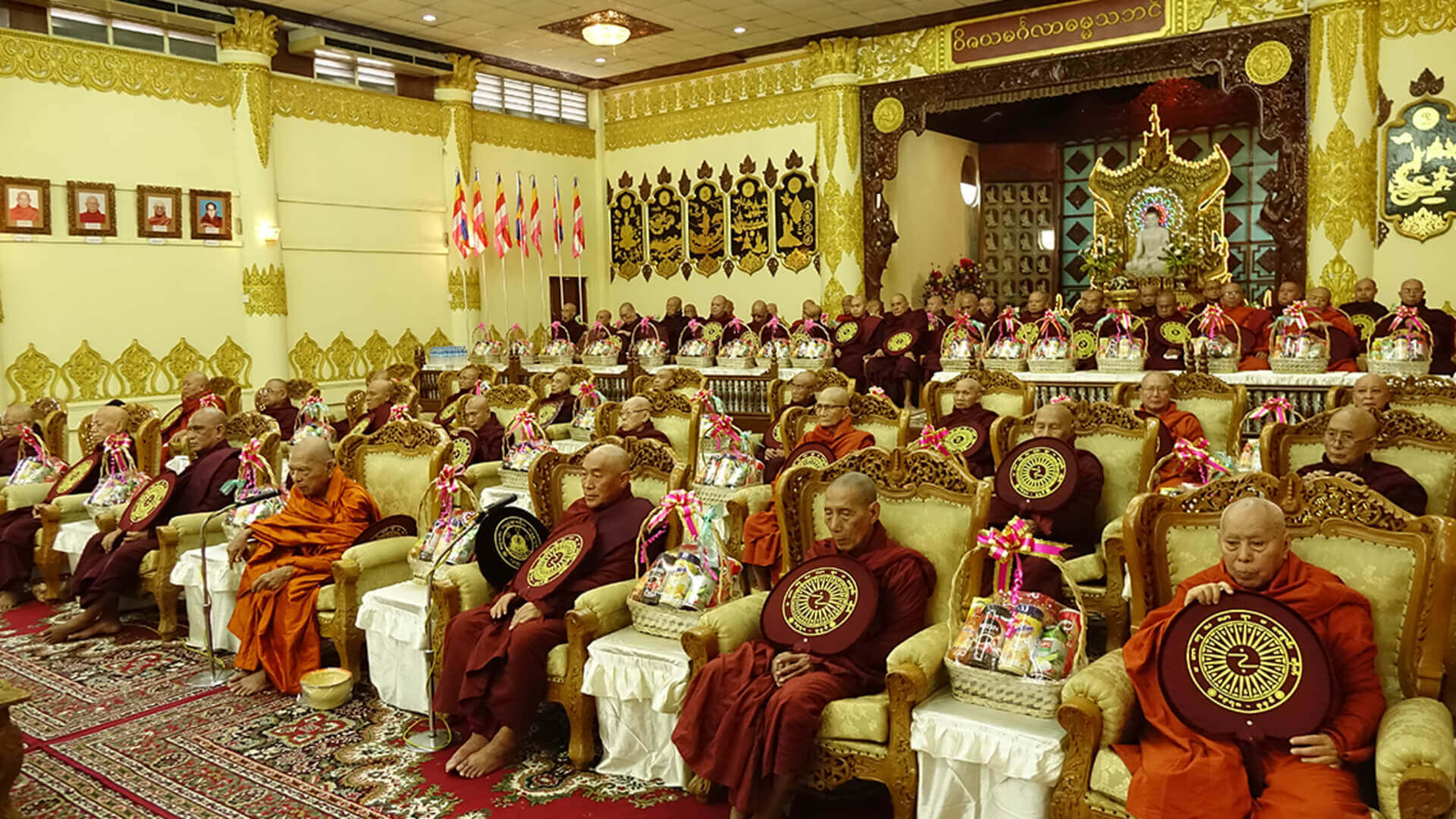
Revitalizing the Dharma
Winter, 2016. Ven. Chan Master Hsin Tao was leading the crowd in making a special offering - a Maha-Sangha-Dana for thousands of monks - at the Big Cave of World Peace (Kaba Aye Mahāpāsāna guhā) of Yangon, Myanmar. The sangha-dana in its original form allows the offering of food, clothing, even bedding materials and cash donations to support the monks in their monastic practice. Master Hsin Tao’s offering was attended by 43 Mahathera from the National Sangha Committee of Myanmar and other local dignitaries. More than 1,500 monks were on site to receive the offering. The ever-growing scale of LJM’s Maha-Sangha-Dana in 2017 made it its 16th such annual offering at a sacred site in Buddha’s Land on Earth.
Worth mentioning is the fact that the “6th Buddhist Council” was held exactly at the same place from May 1954 to May 1956. And from the viewpoint of Buddhism, to conduct a Sangha-Dana ritual at the sacred site of the Big Cave of World Peace was in itself a very special blessing.
As there was no written language to record the teachings of the Buddha even for quite some time after his passing away, history and records were first passed by his principal disciples, then from generation to generation by way of ‘word of mouth’ by monks specifically trained for the task. To ensure the Buddha’s legacy and within the first hundred days of his demise, the first such ‘council’ took place, involving the dedication of 500 Maha-Thera and a great number of trained monks, reciting and debating one another in their memorized records of the Buddha’s teachings, and the painstaking task served the purpose of making certain the accuracy of the verbal records so that none would have been altered, distorted, dropped, deleted, or willfully augmented.
Then the use of writing became widespread in India, and the 4th Buddhist Council took place in the year 29 B.C. and the Classics were proof-read and compared and debated on to ensure accuracy. Both the 5th (1871) and the 6th (1954) such Councils were held in Burma, with official patronage to support such labor- and capital-intensive undertakings and the country became widely recognized as ‘the Buddha’s Land on Earth’.
Sanghas of Myanmar wear robe-like clothing named Jia-Sha (Kasaya in Sanskrit, Kasavaj in Pali) that literally stays ‘true to form’ as it was worn when the Buddha was alive. Seeing monks in Myanmar today easily reminds one of how Buddha’s disciples would have looked like. A Burmese Buddhist preceptor was quoted as saying that there is no other clothing like theirs in the world that remains unchanged in style for two-and-a-half millennia. As with the monk’s robe, unchanged is how Buddhists cherish the Triple Gem: the Buddha, the Dharma, and the Sangha. And the LJM opted to conduct the auspicious Sangha-Dana event at the particular site was to convey a sense of tradition being carried on. The Maha-Sangha-Dana was in a way the 6th Buddhist Council re-visited, and as such, it highlighted how the LJM Buddhist Society has stayed committed to the revitalization of the Dharma over the past 30-odd years.
n the footsteps of Master Hsin Tao, the LJM Buddhist Society spares no efforts in pursuing a life philosophy and lifestyle in line with the Master’s ideal of “Love and Peace / Diversified Symbiosis”. Put succinctly, we give our utmost in emulating Master Hsin Tao’s relentless efforts in securing the ultimate bliss for all sentient beings, for world peace, as well as for the Earth’s sustainability. The Maha-Sangha-Dana to support a thousand monks at a historically significant and religiously sacred site - and turns it into an annual mission - serves to reinforce the message that LJM takes it upon itself to continue the cultivation and incubation of talents suitable to carry on the Buddhist traditions, so that the teachings and legacy of the Buddha continue to blossom.
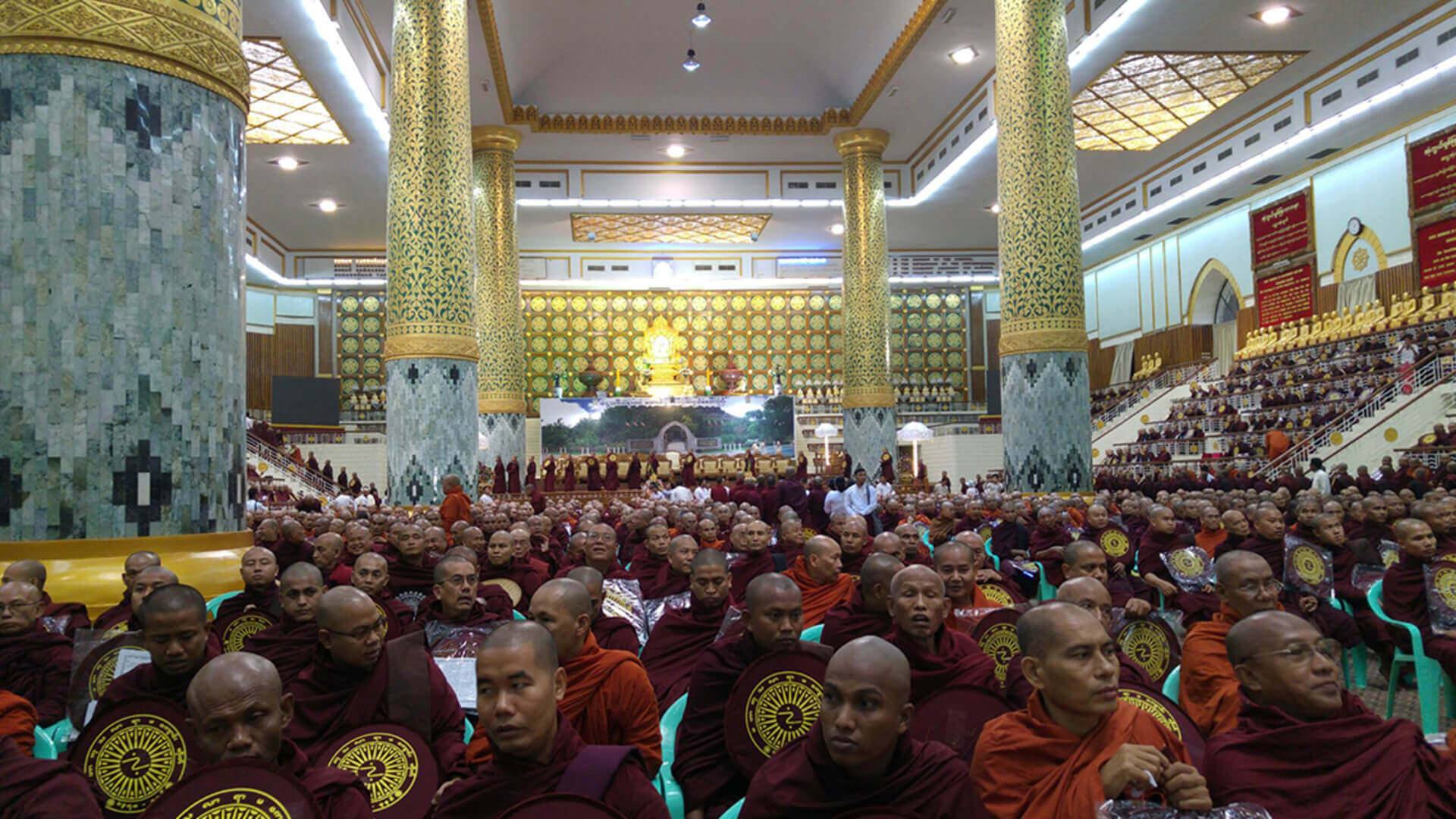
The 6th Buddhist Council
The ‘6th Buddhist Council’ was officiated on May 17, 1954, at the Big Cave for World Peace (Kaba Aye Mahāpāsāna guhā). The site is a replica of the famed Saptaparni (Seven-leaf) Cave of the Mulakandha Kuti (Ling Jiou Mount) near Rajgir, where the first sizeable assembly of 500 learned Buddhist Maha-Thera and a large number of monks trained to memorize and recite the oral history of Buddha’s teachings took place within the first 100 days of the Buddha’s passing away. The World Peace Cave was constructed with the patronage of the government of Myanmar.
The time-honored mission-specific and -critical assembly had always been a time-consuming and resource-demanding undertaking, and the 6th Buddhist Council was no exception and it took two full years to finally conclude on May 16, 1956. Some 2,500 scholarly Buddhist Maha-Thera, preceptors and monks from eight countries (Myanmar, Thailand, Cambodia, Laos, India, Sri Lanka, Vietnam, and Nepal) gave their collective best in comparing and contesting sutras and scriptures in circulation to arrive at a unanimous consensus for each and every major work of the Buddhist sutras, for the official standard, so to speak. And, finally, some two and a half millennia after the passing away of the Buddha, scriptures of Buddhism were certified as the correct Dharma Classics in May, 1956. The unsurpassed achievement was further celebrated with a total of some 3,000 young Buddhist Sramanera (seminarians) having their head clean-shaven on-site as part of their monastic vow.
It is obvious that such ambitious mission-critical Councils must have been labor- and resource-intensive, and Myanmar was the host country for both the 5th and the 6th Councils towards the explicit purpose of proof-reading and certifying the Buddhist scriptures in circulation. Small wonder, then, that the country has traditionally been known as “the Buddha’s Land on Earth”. Meanwhile, the World Peace Cave is also the site where annually Buddhist monks from northern Myanmar gather to take the test and defend their understanding of the Buddhist scriptures. Hence the nickname of the site as the ‘Scripture Defending Plaza’ became popular.
After holding its own annual Sangha-Dana ritual to support Buddhist Sramanera and monks in Myanmar in winter every year for the 15th time running, the LJM Buddhist Society was eventually invited by the authorities to relocate the site for Sangha-Dana to none other but the World Peace Cave, starting in the winter of 2016. It is particularly meaningful to those of us at LJM: the historic site is where the scriptures of the proof-read Dharma of the Buddha’s teachings were certified and monks were supported to accomplish their work, and now we have the rare opportunity to present our offerings in respect and in support of thousands of monks to carry on the tradition. The nourishing of young, next-generation talents to continue the work on the one hand, while on the other, the name of the place (World Peace Cave) is also a happy co-incidence that echoes Master Hsin Tao’s relentless efforts in promoting world peace for over 3 decades and running. We are indeed kindly blessed to rejoice in the Way of the Buddha.
